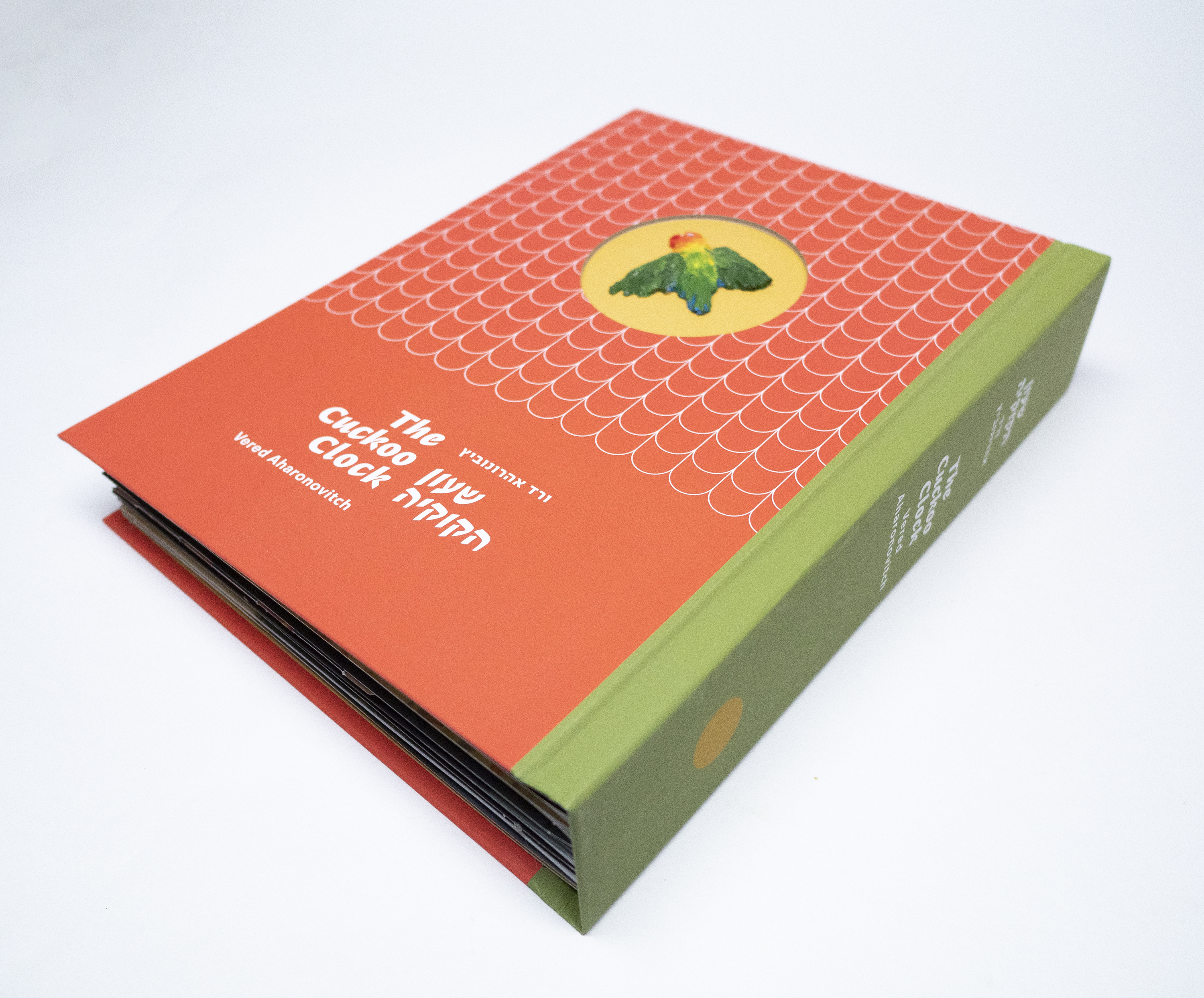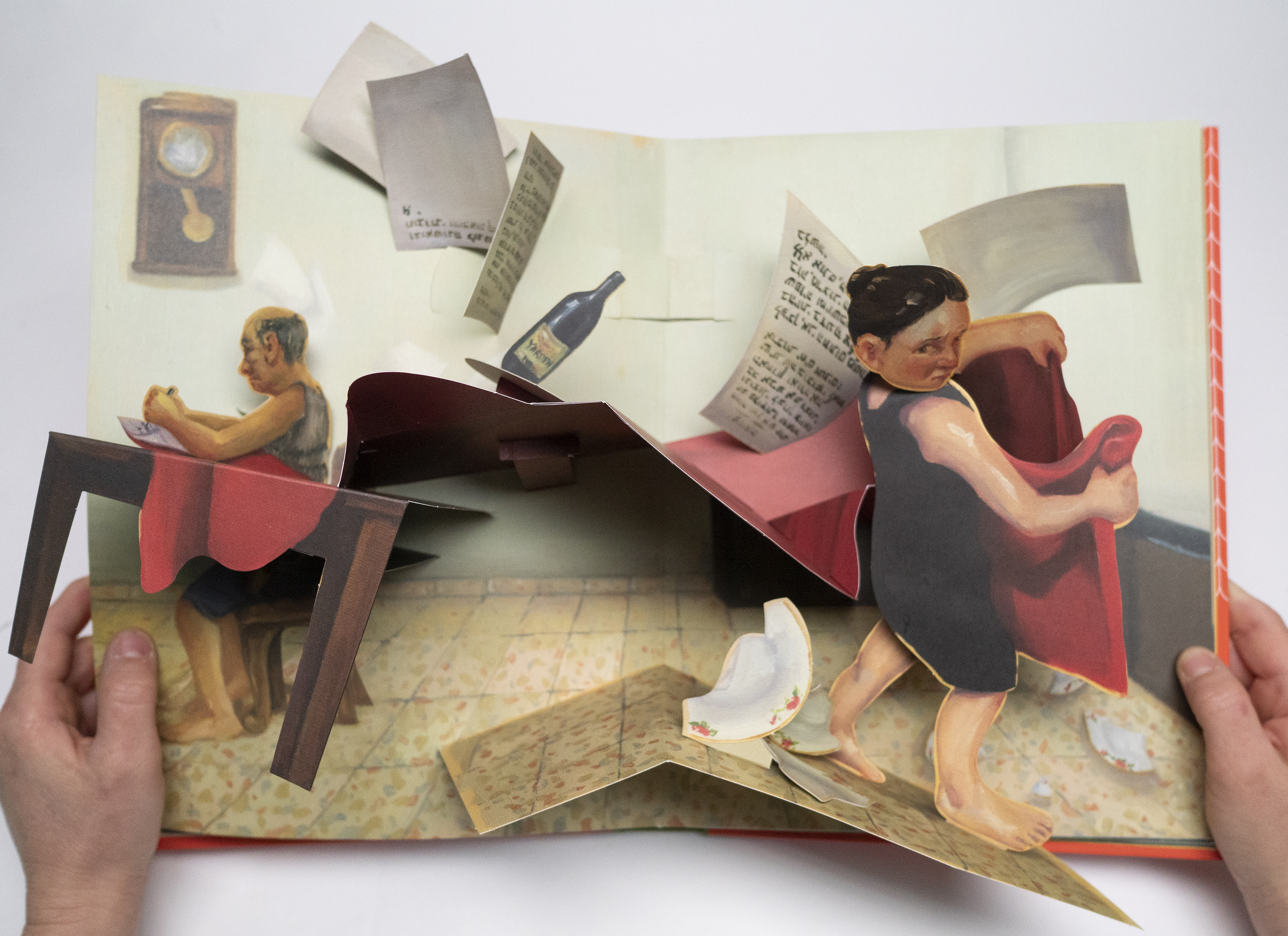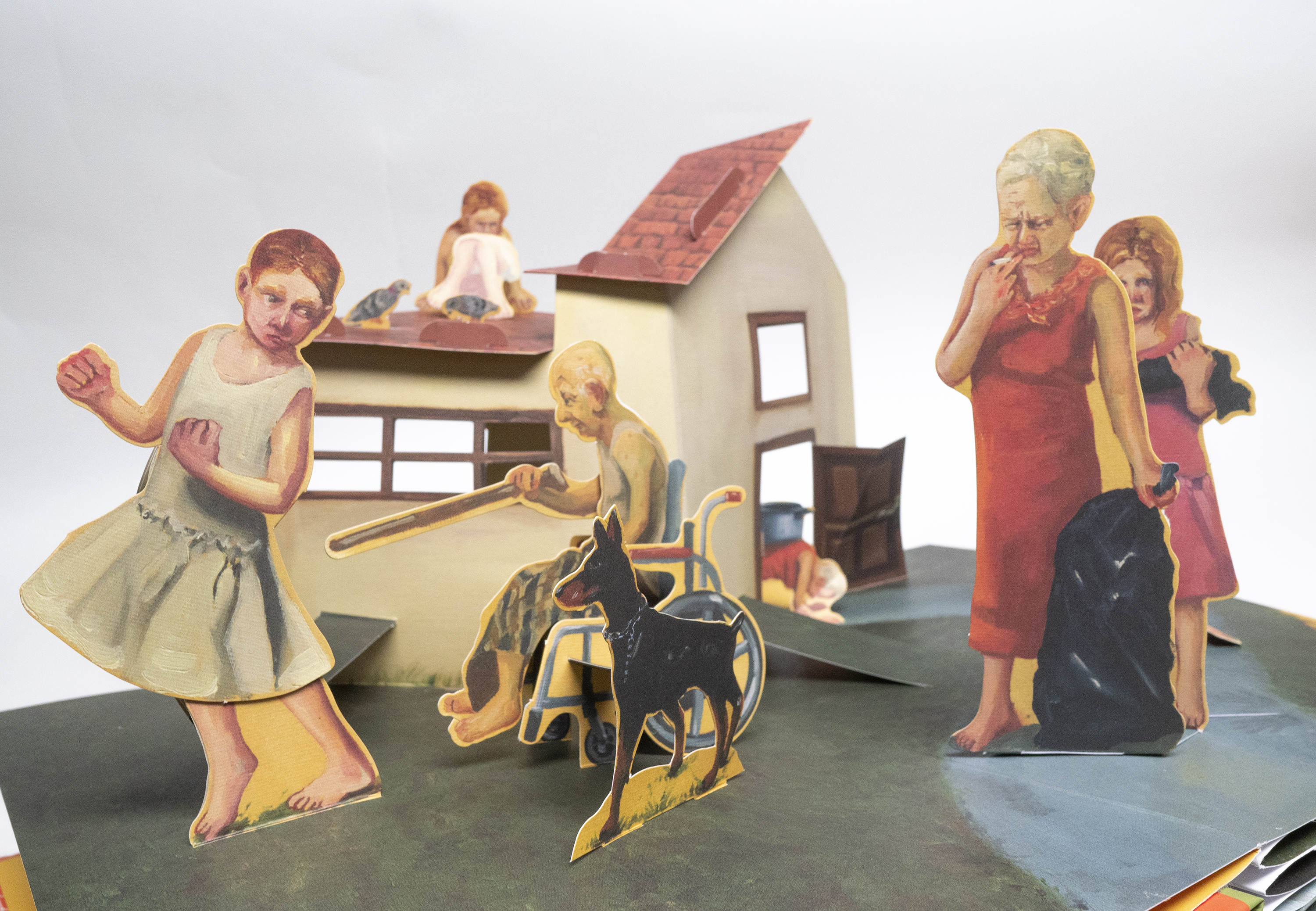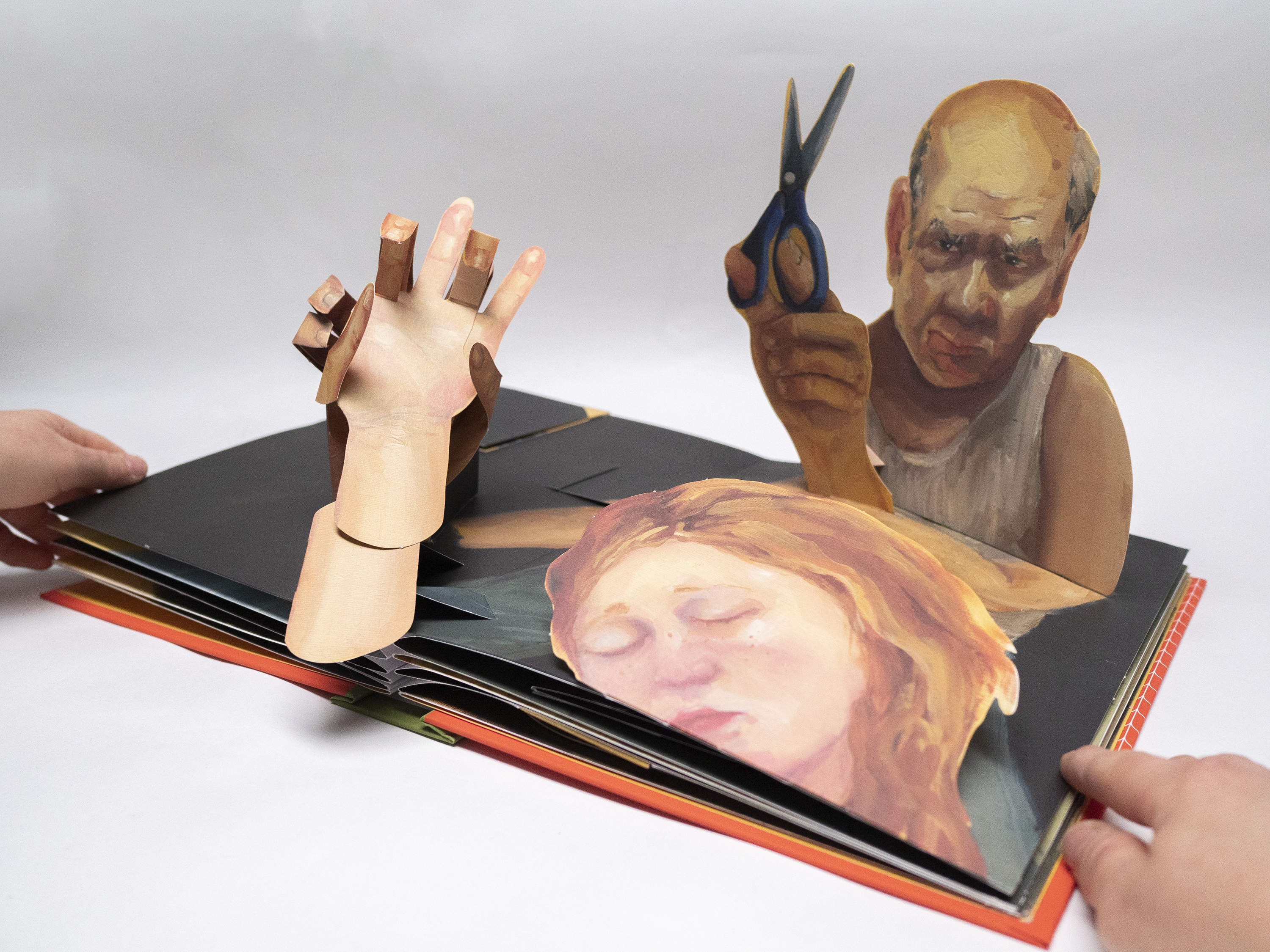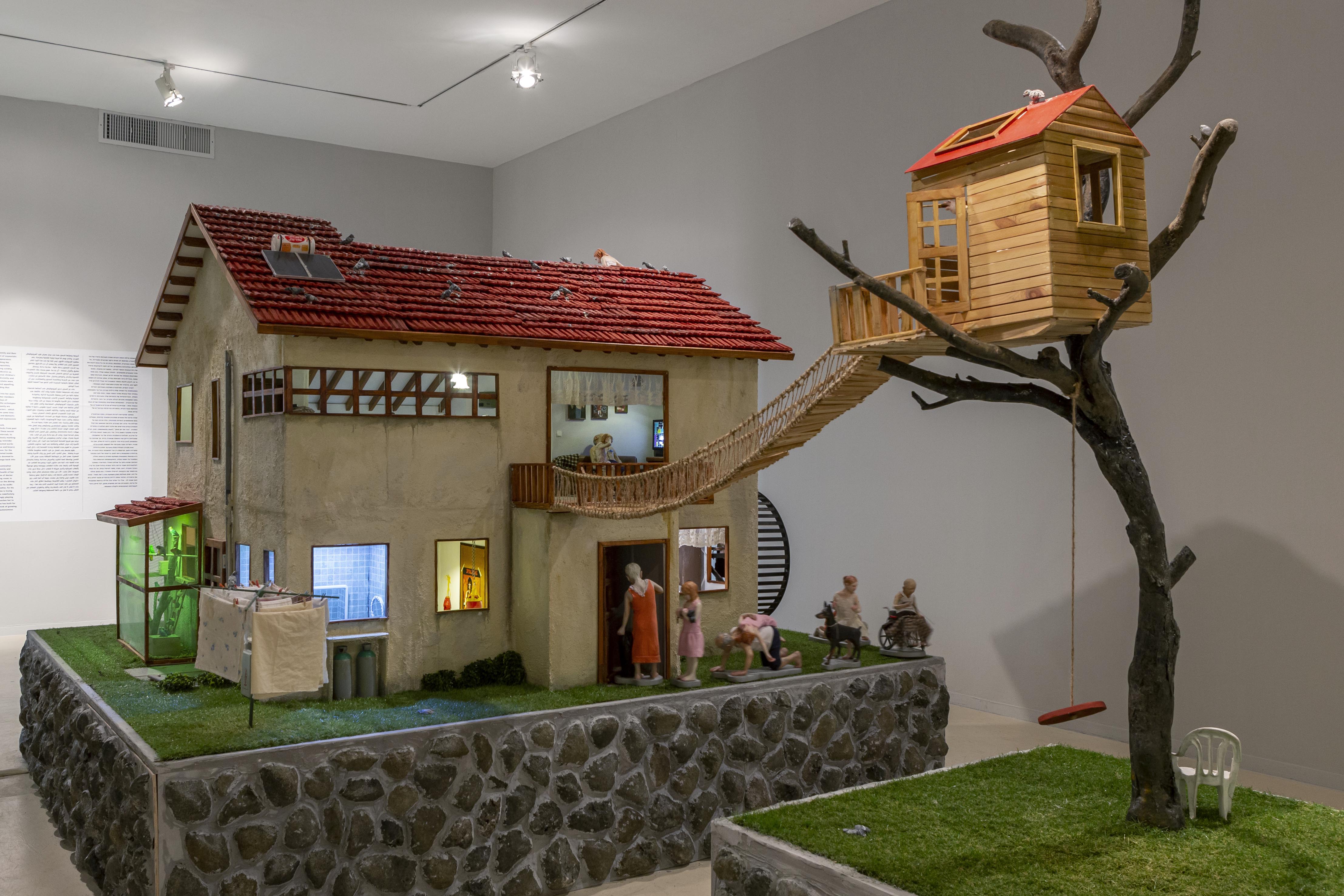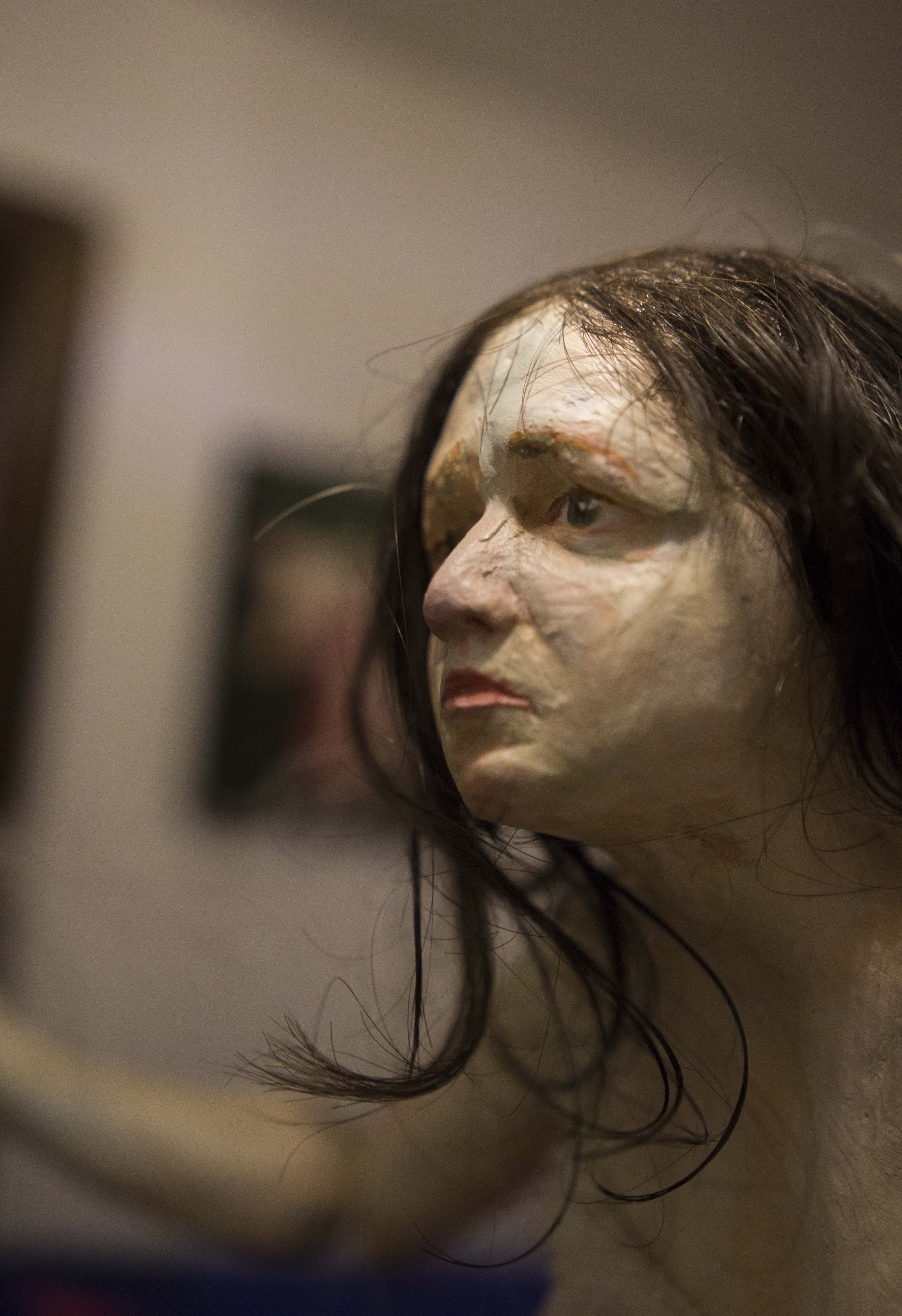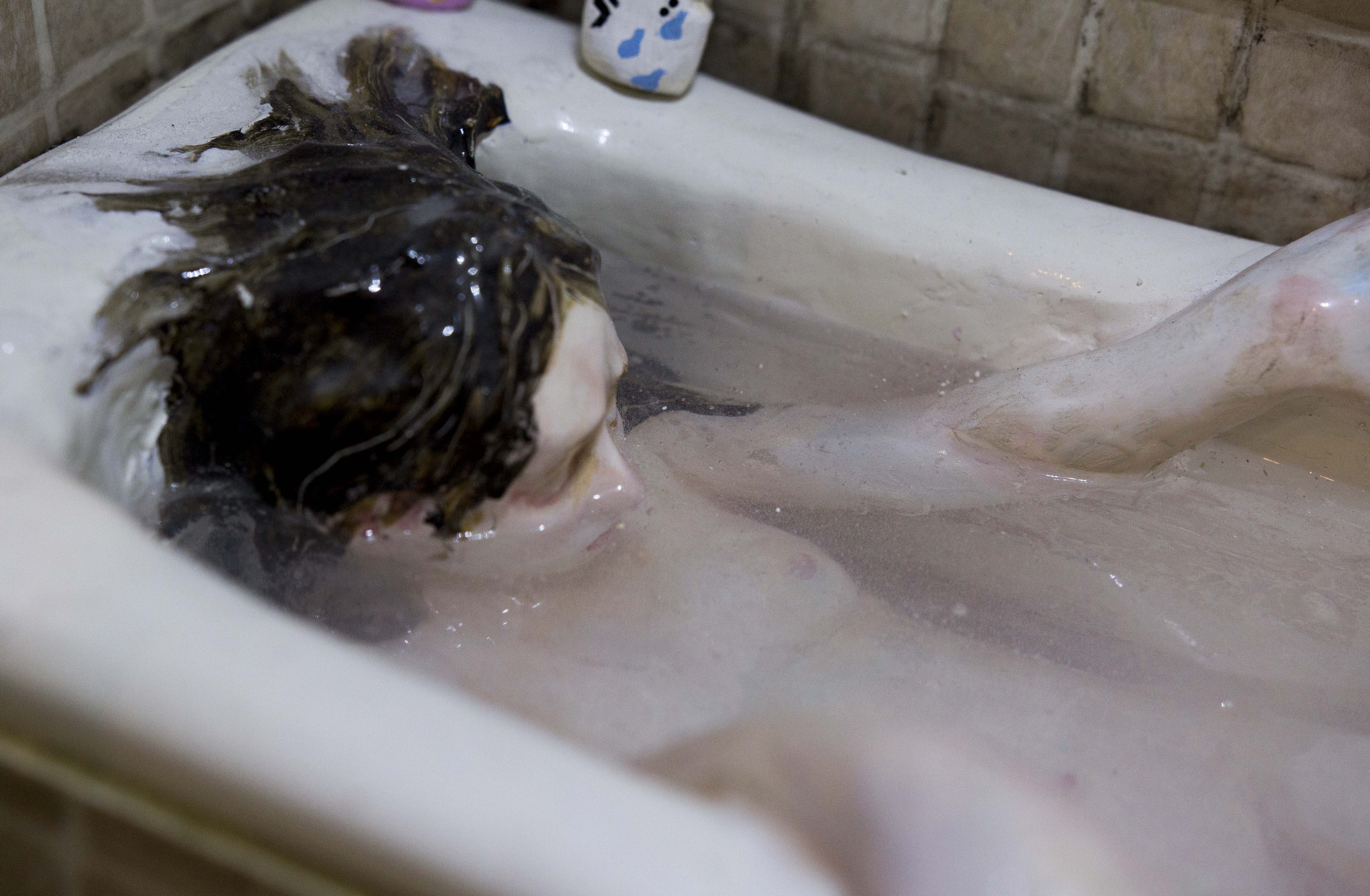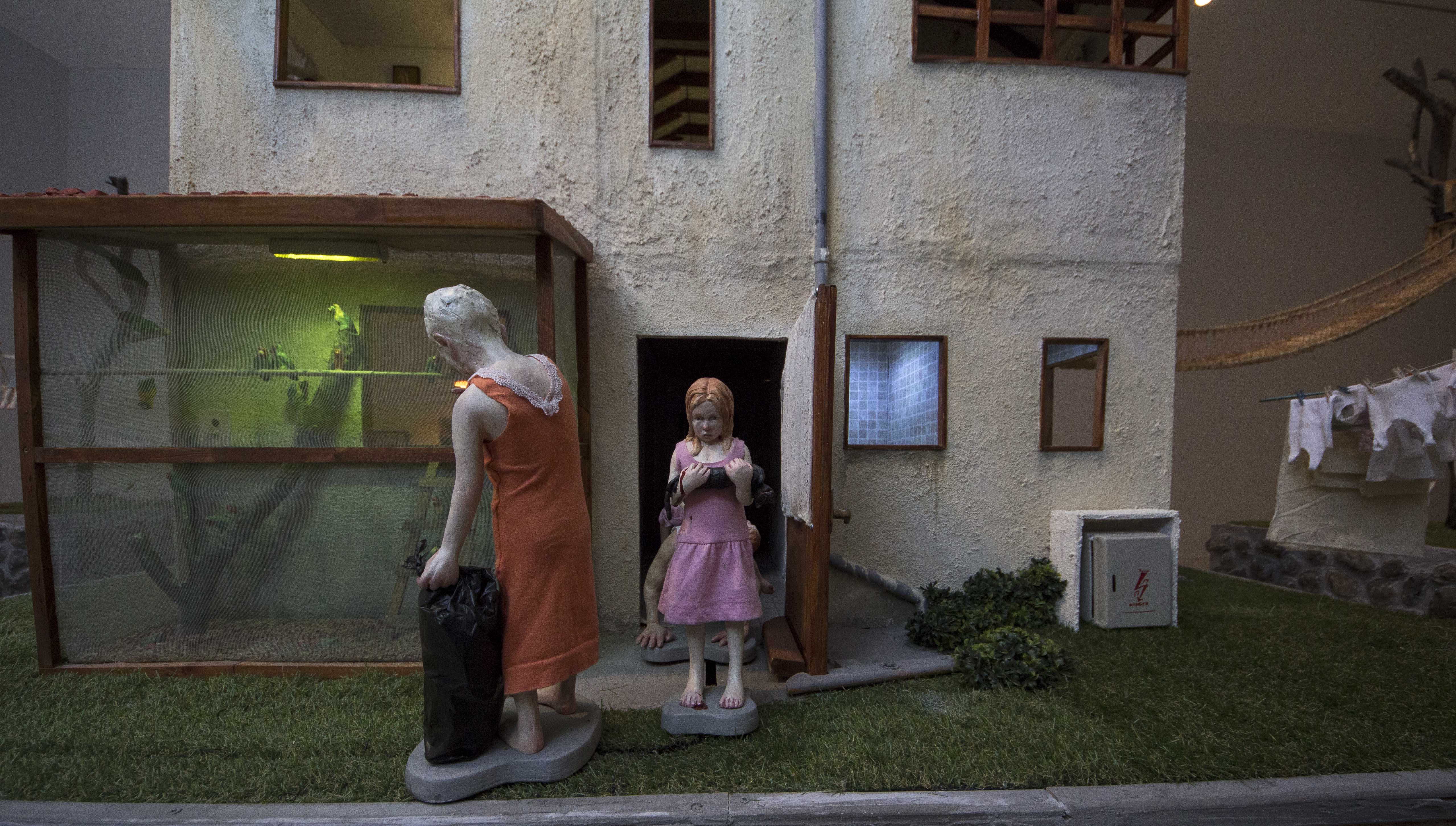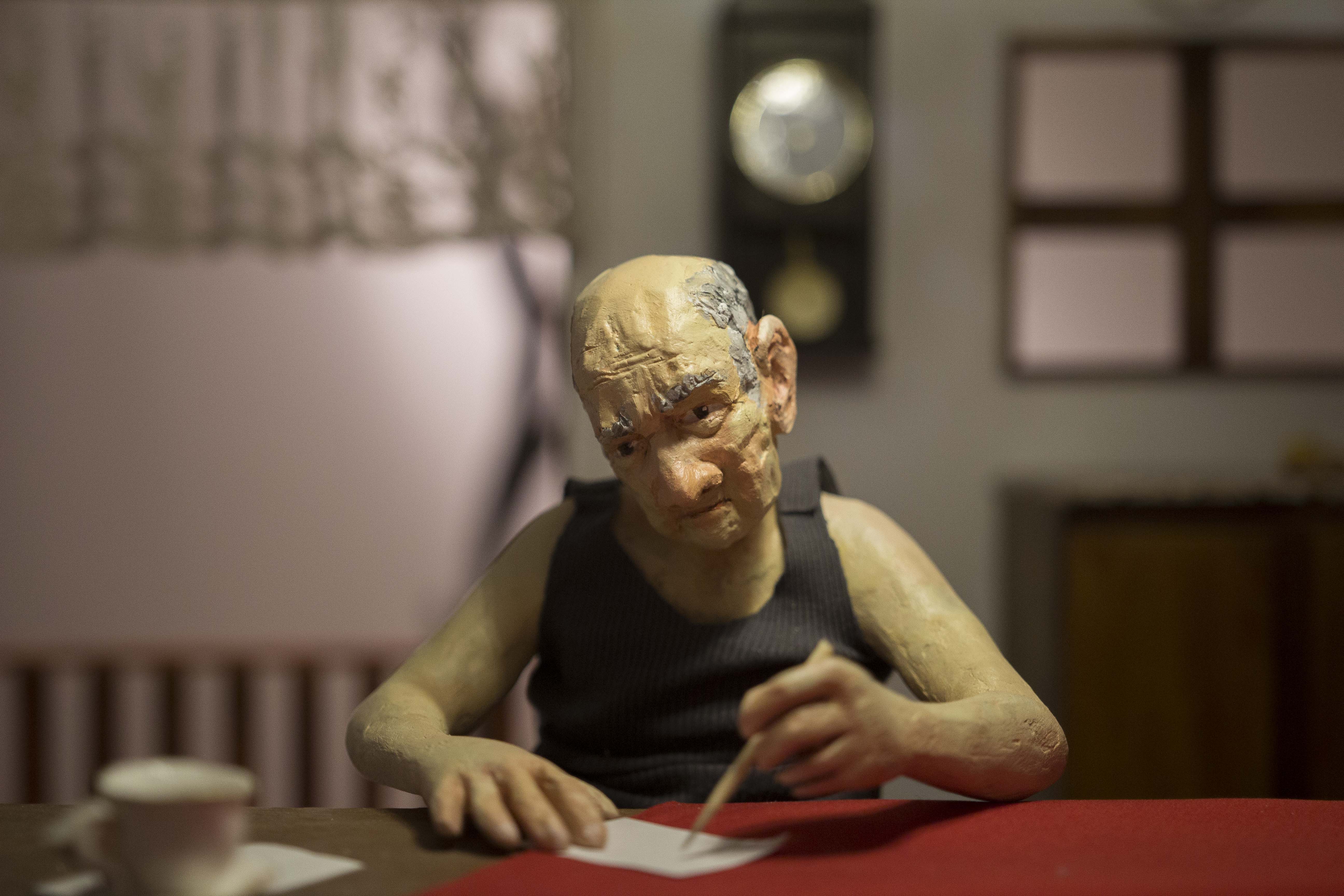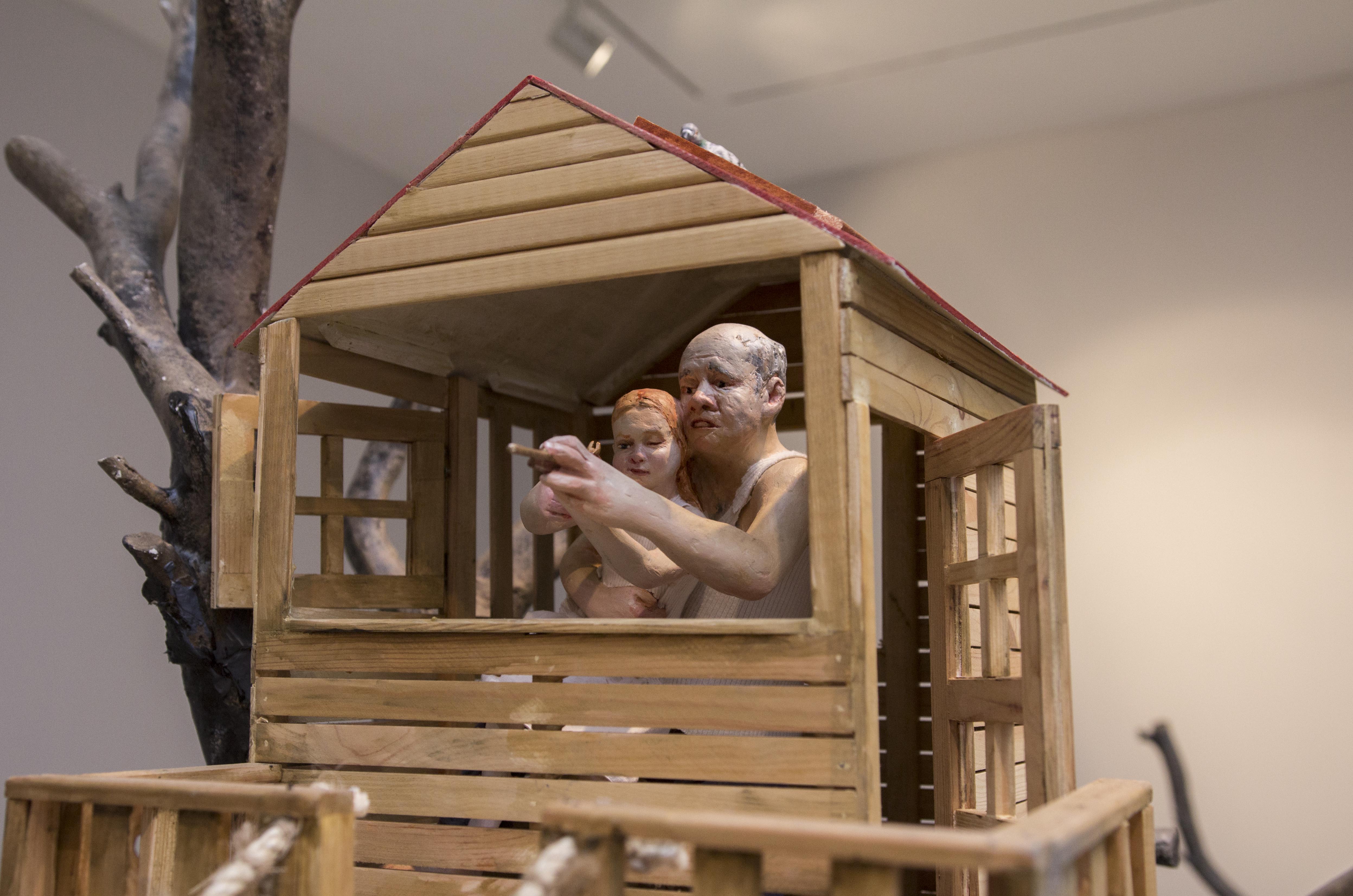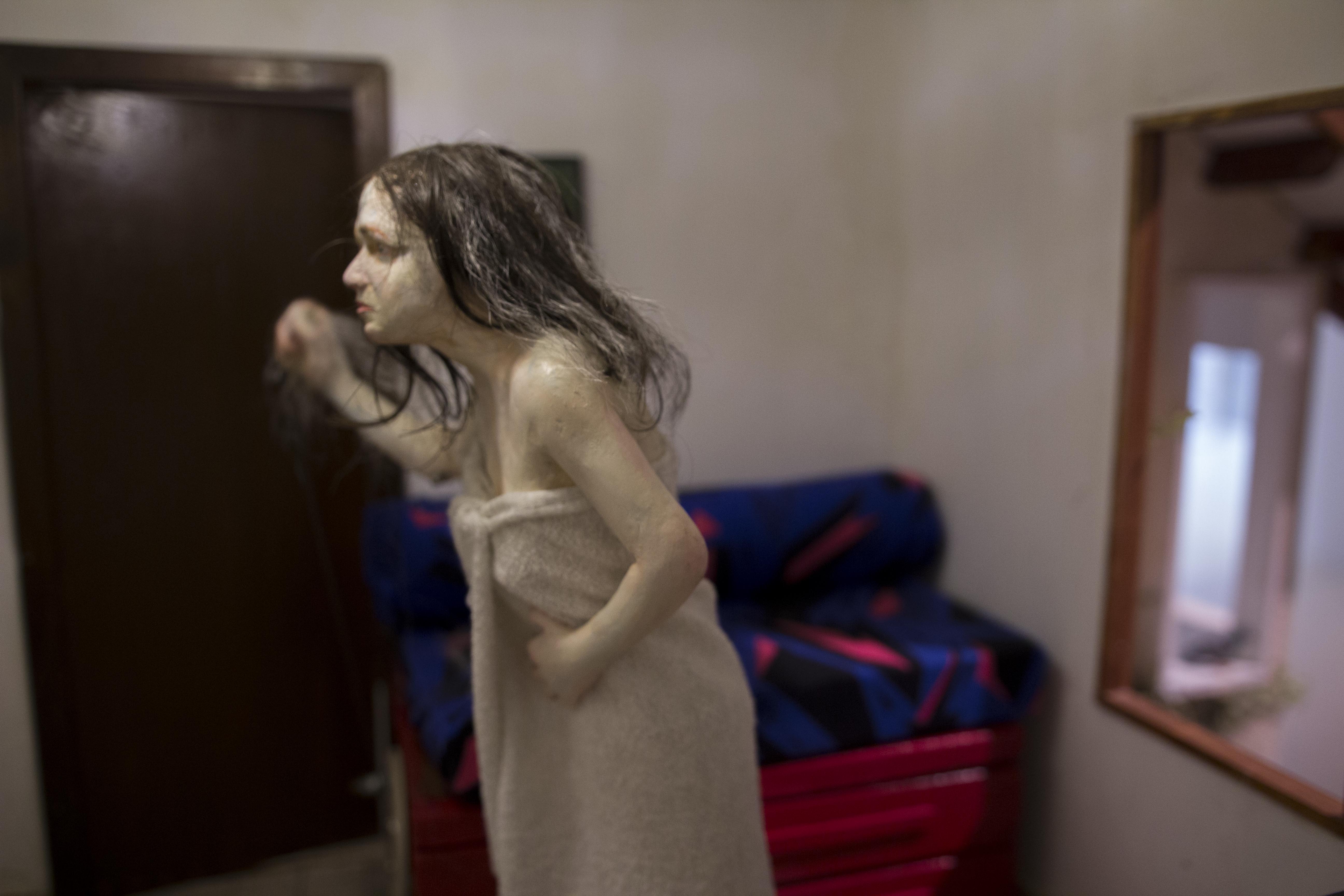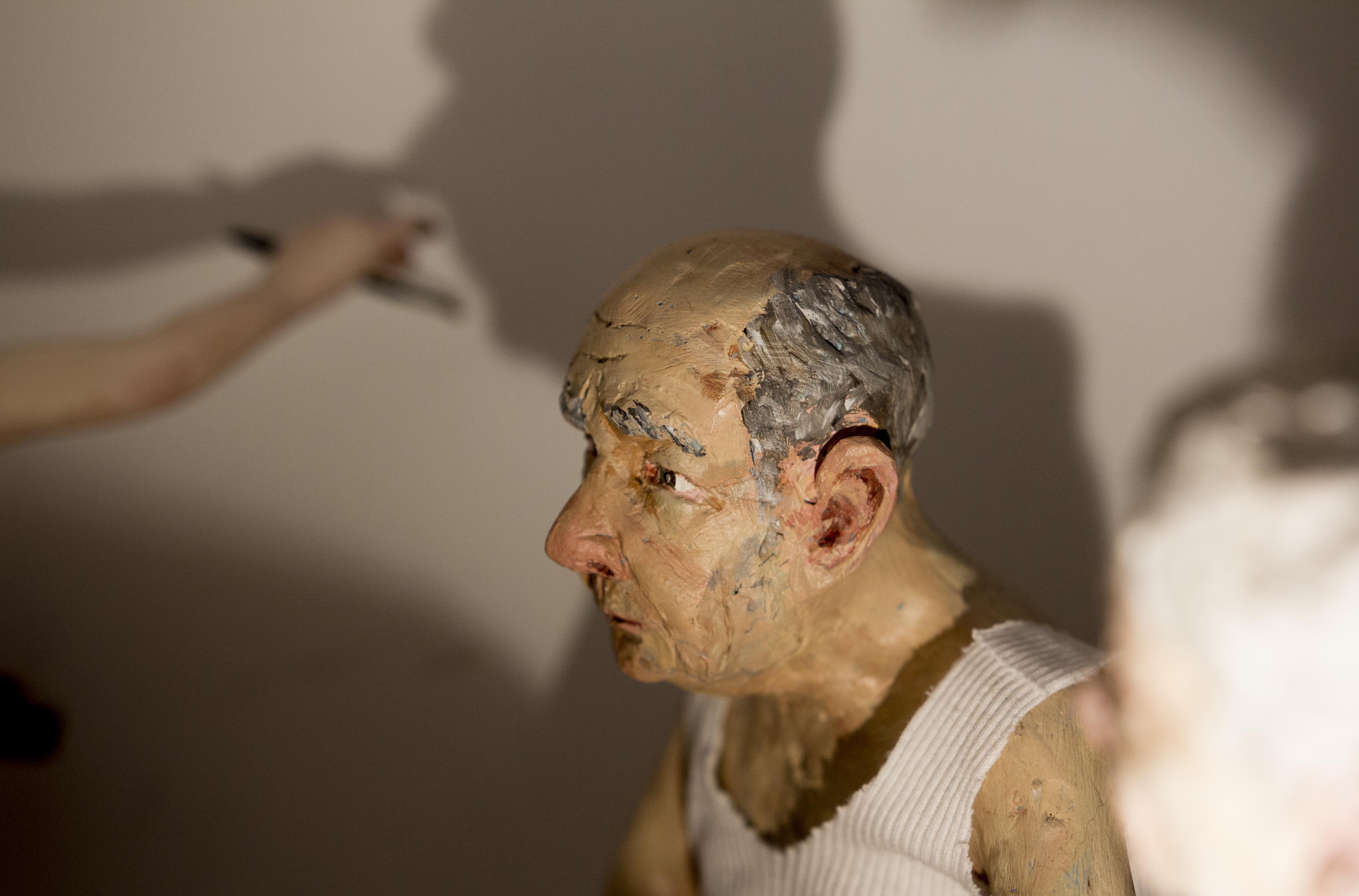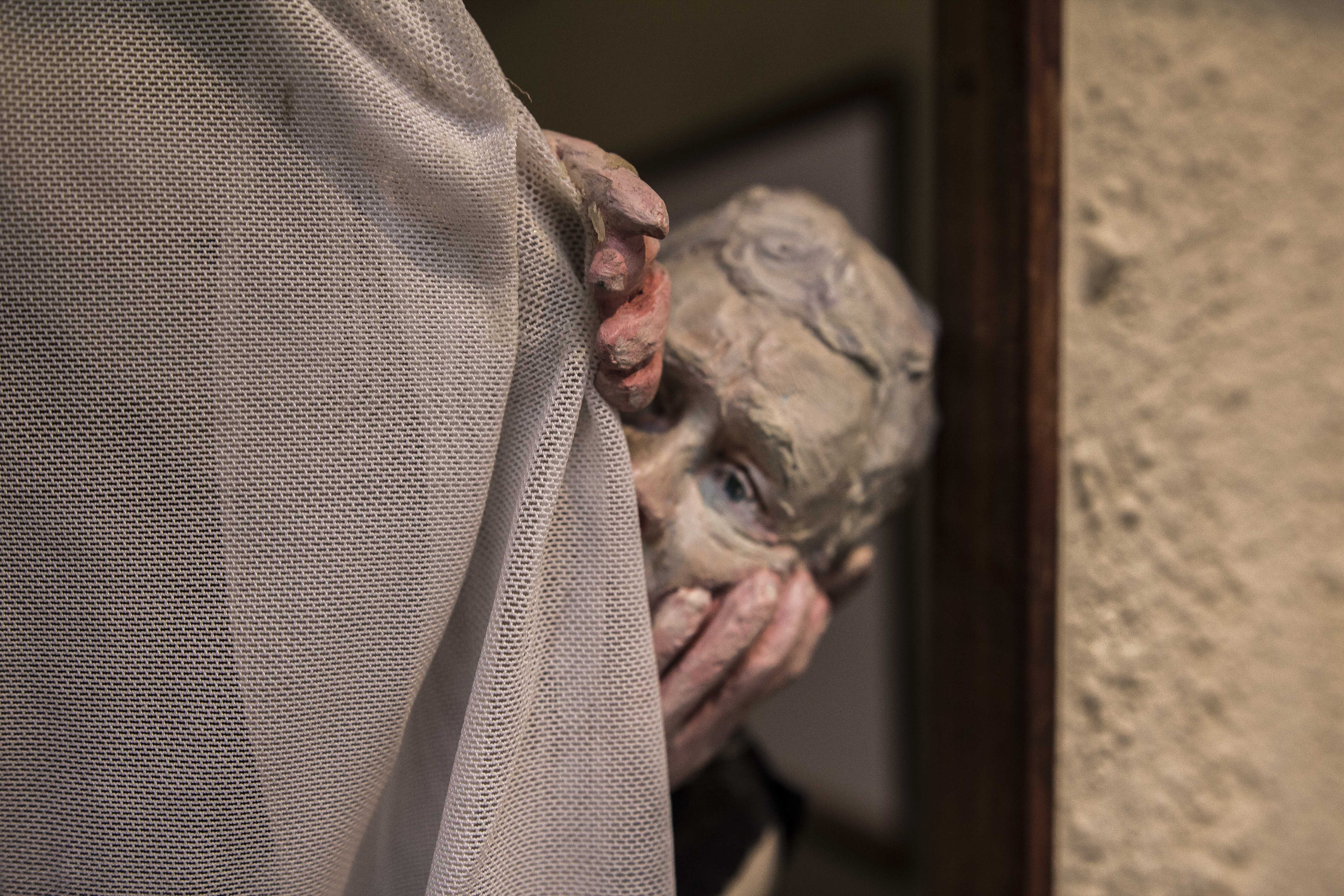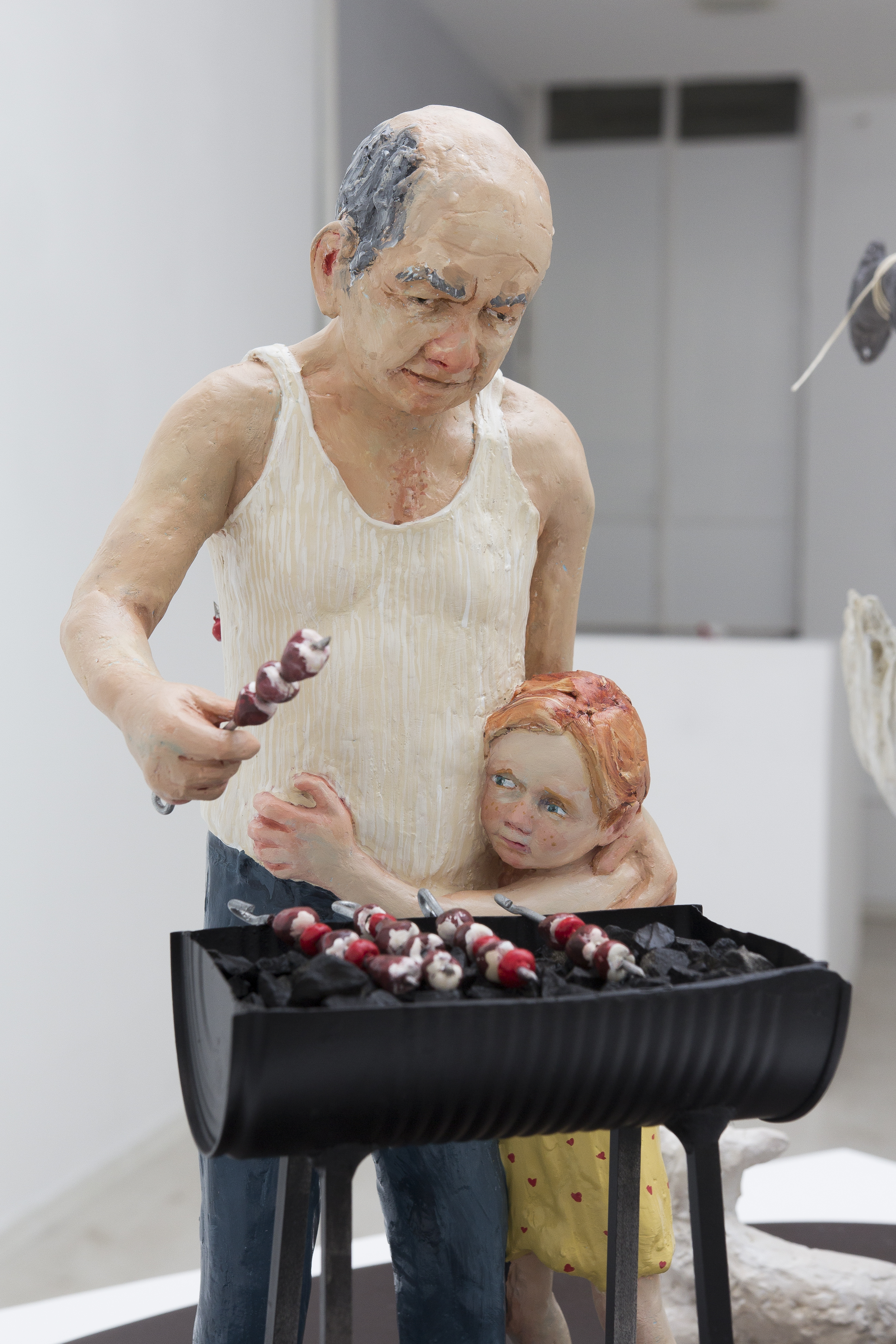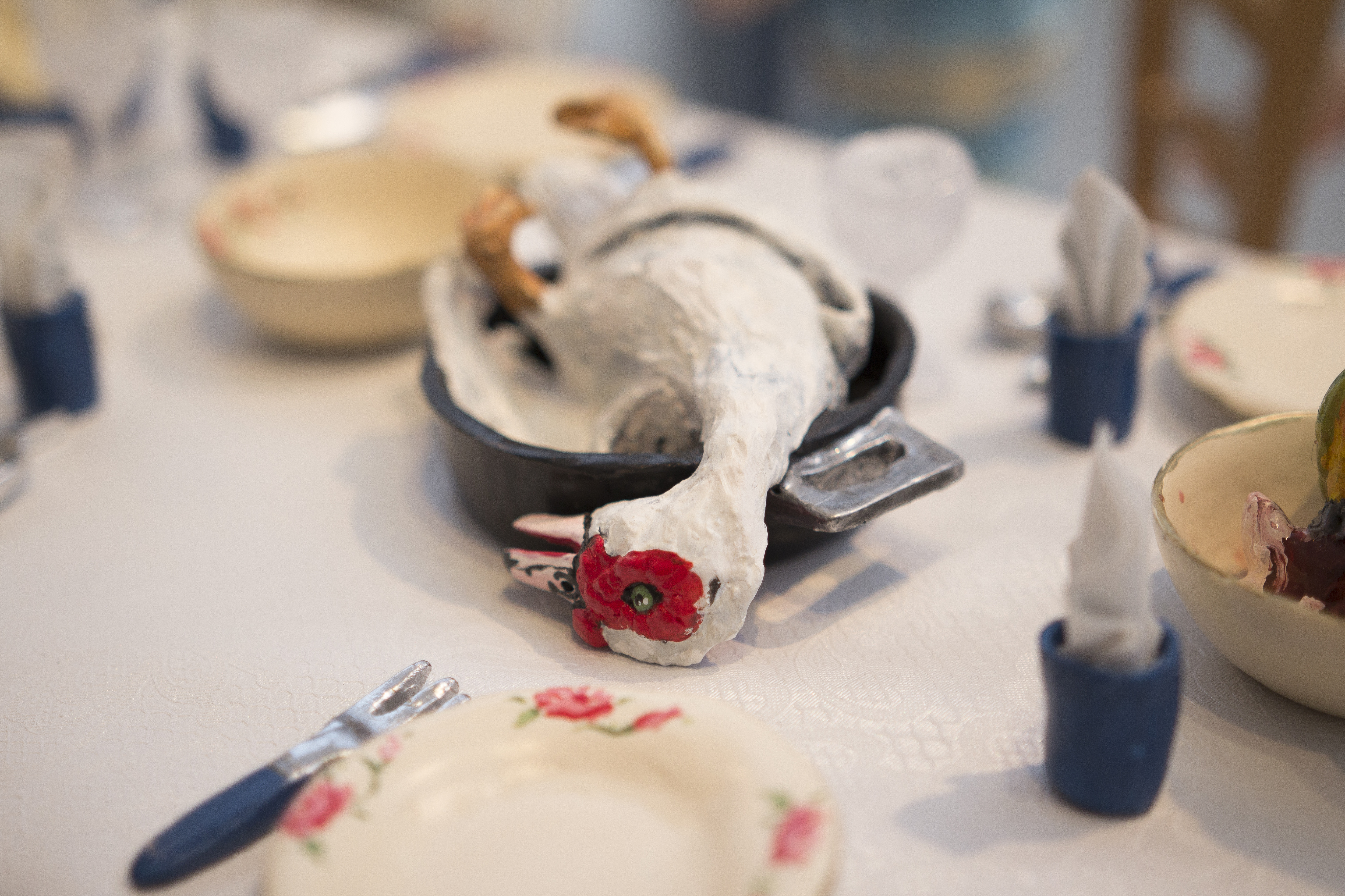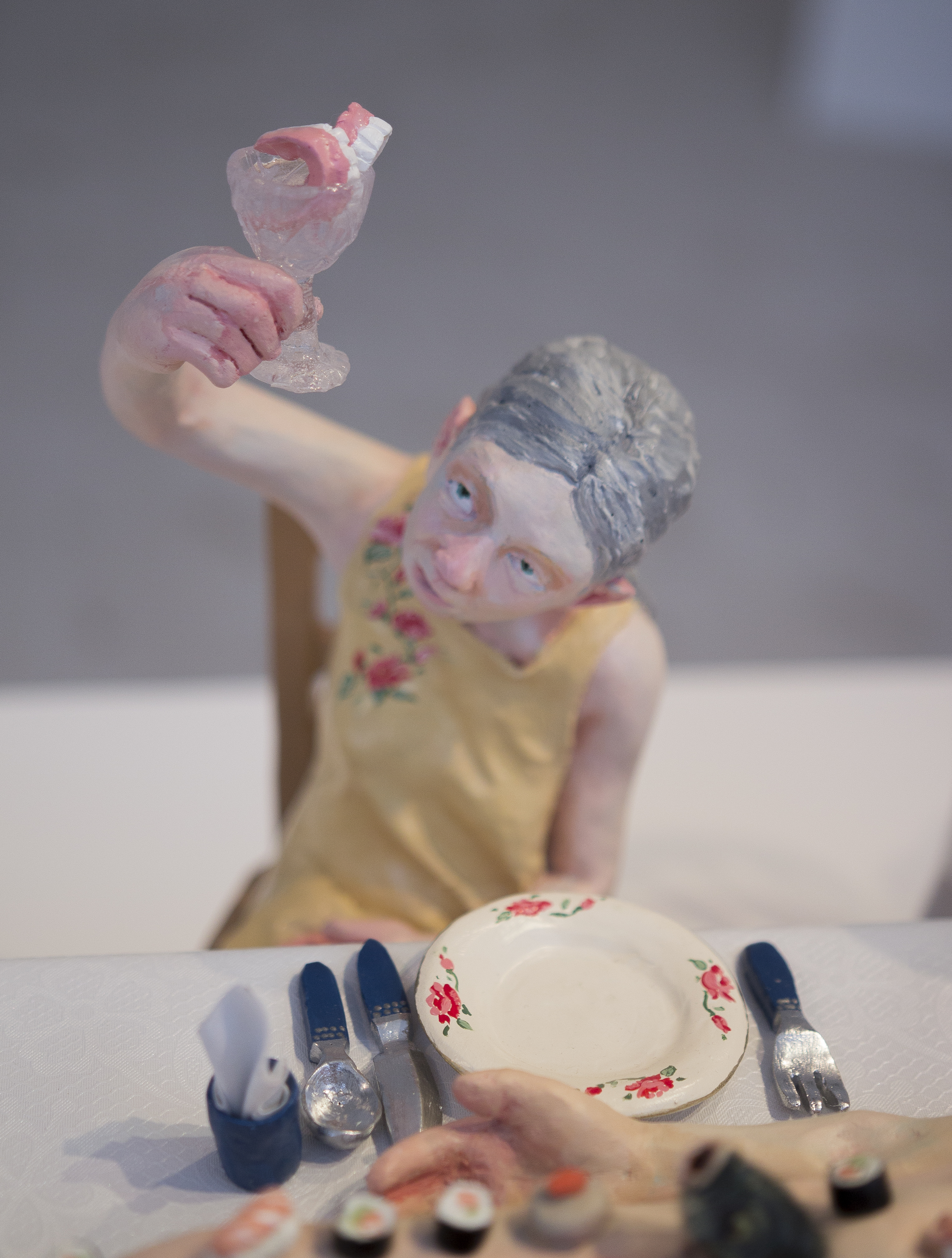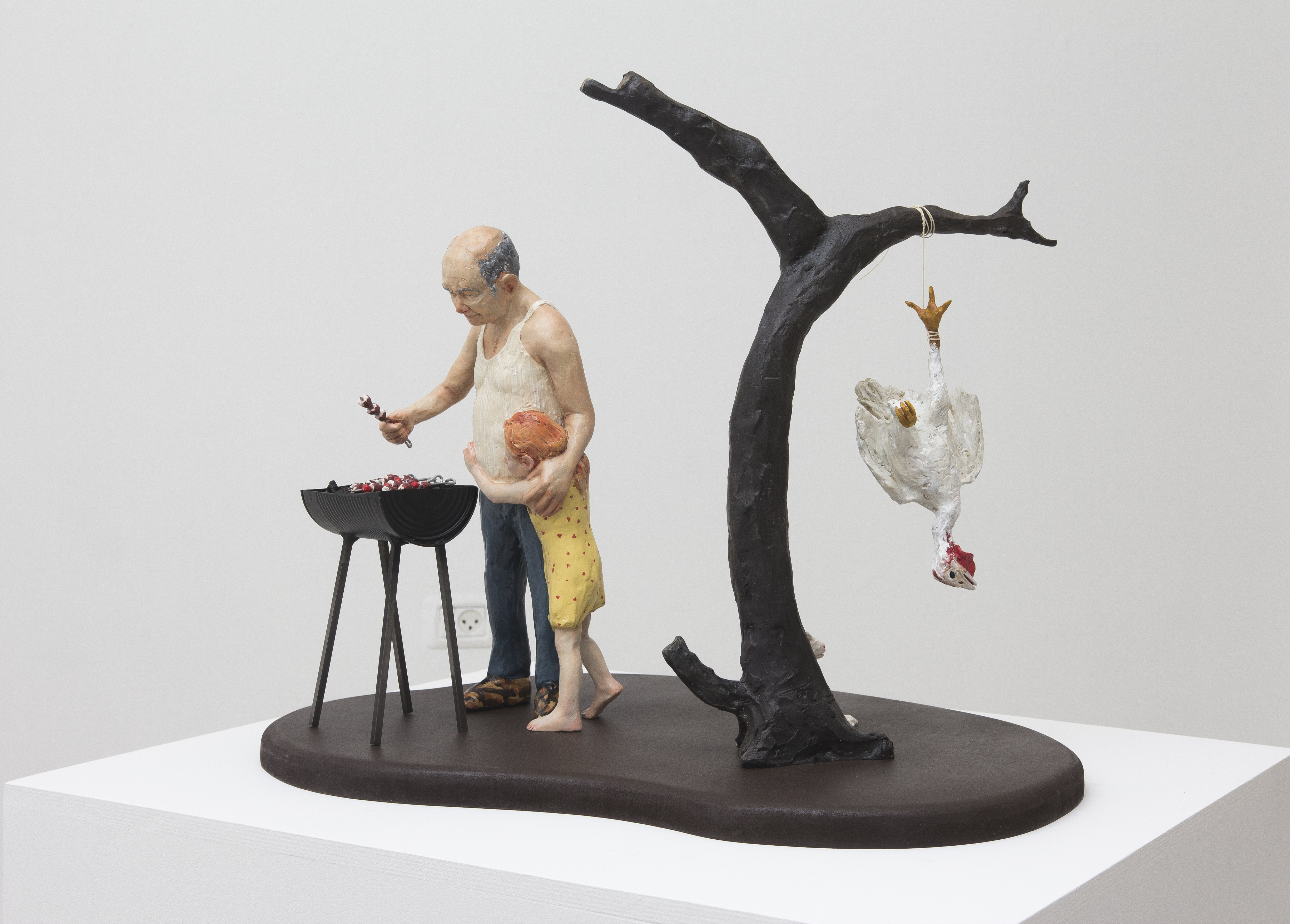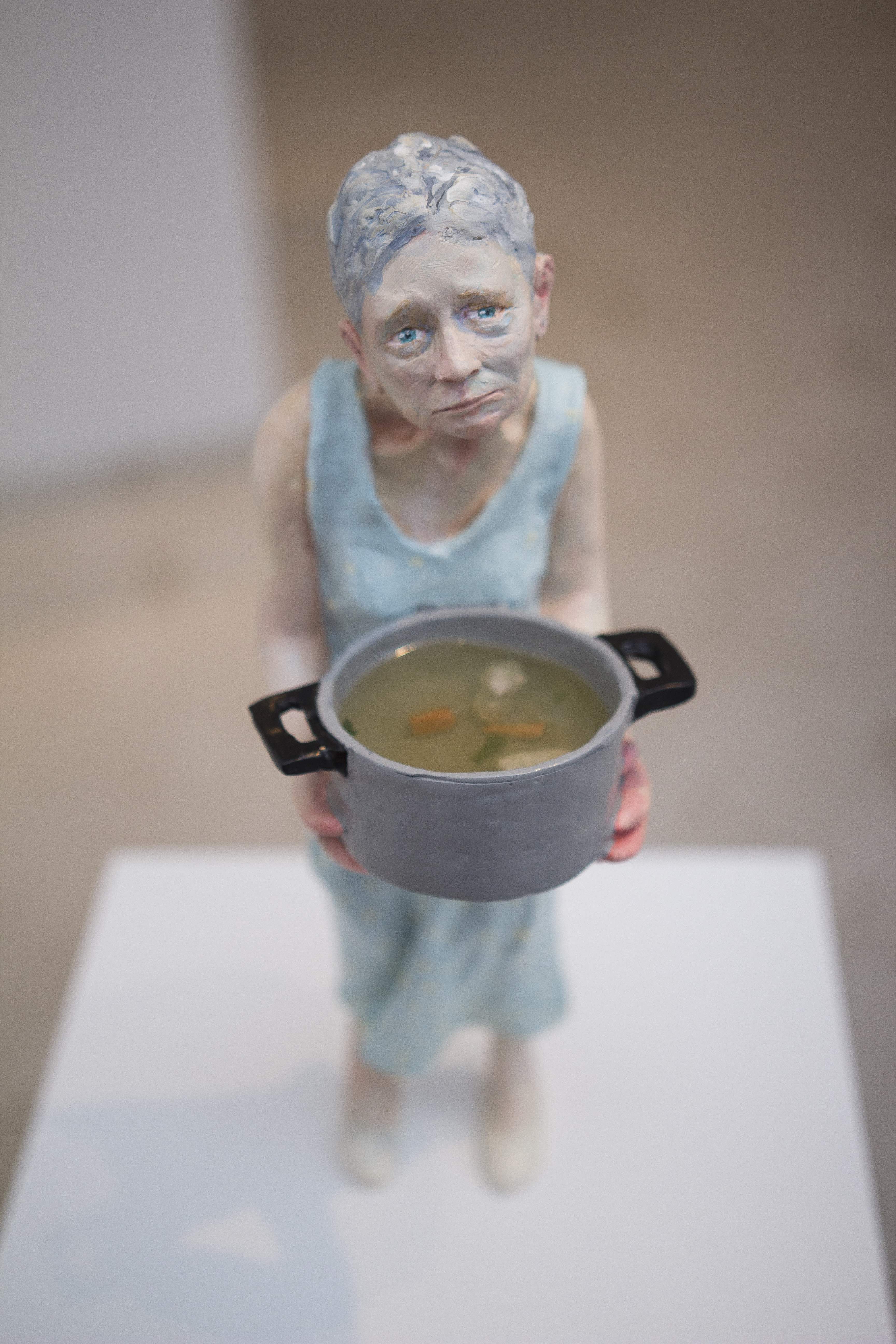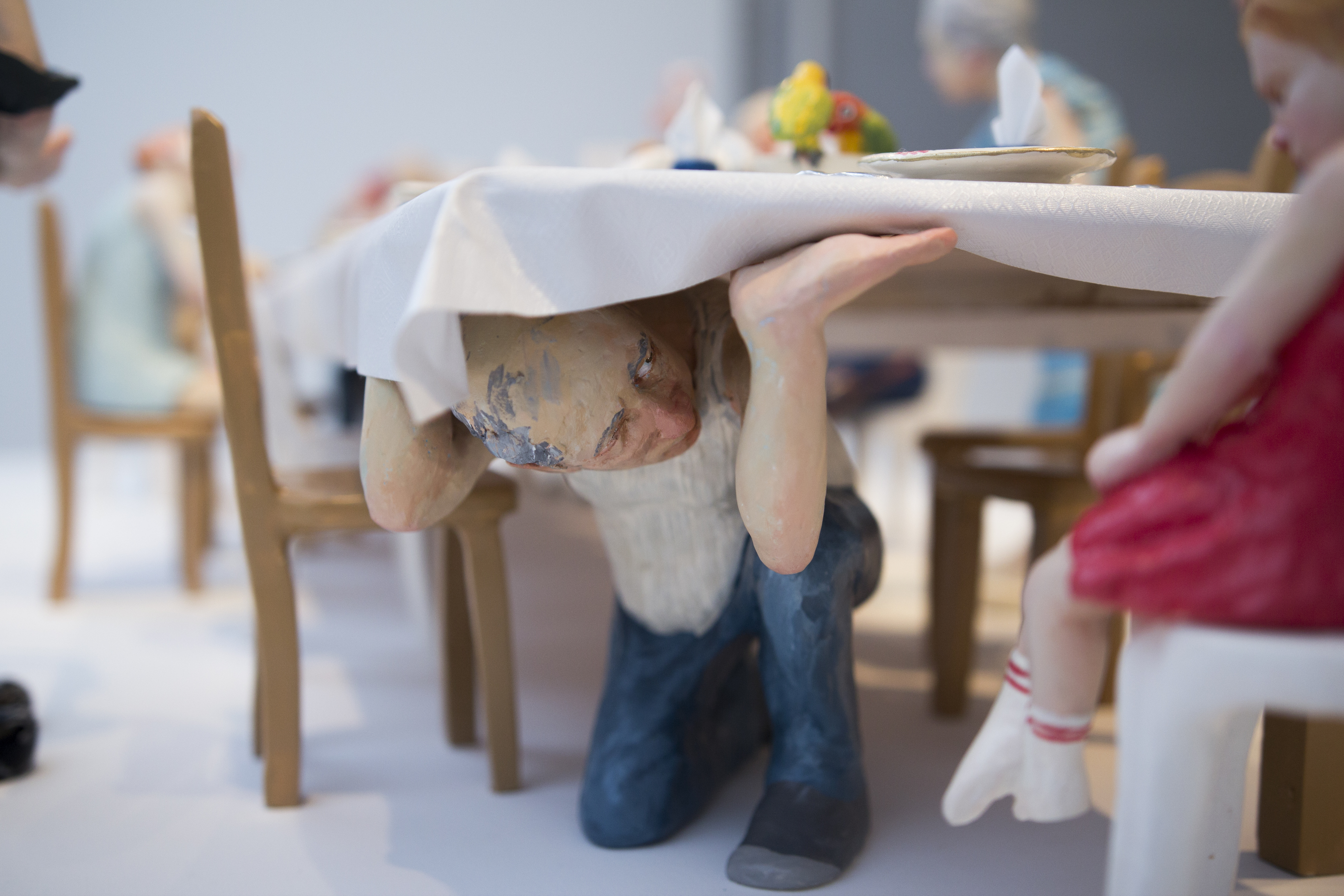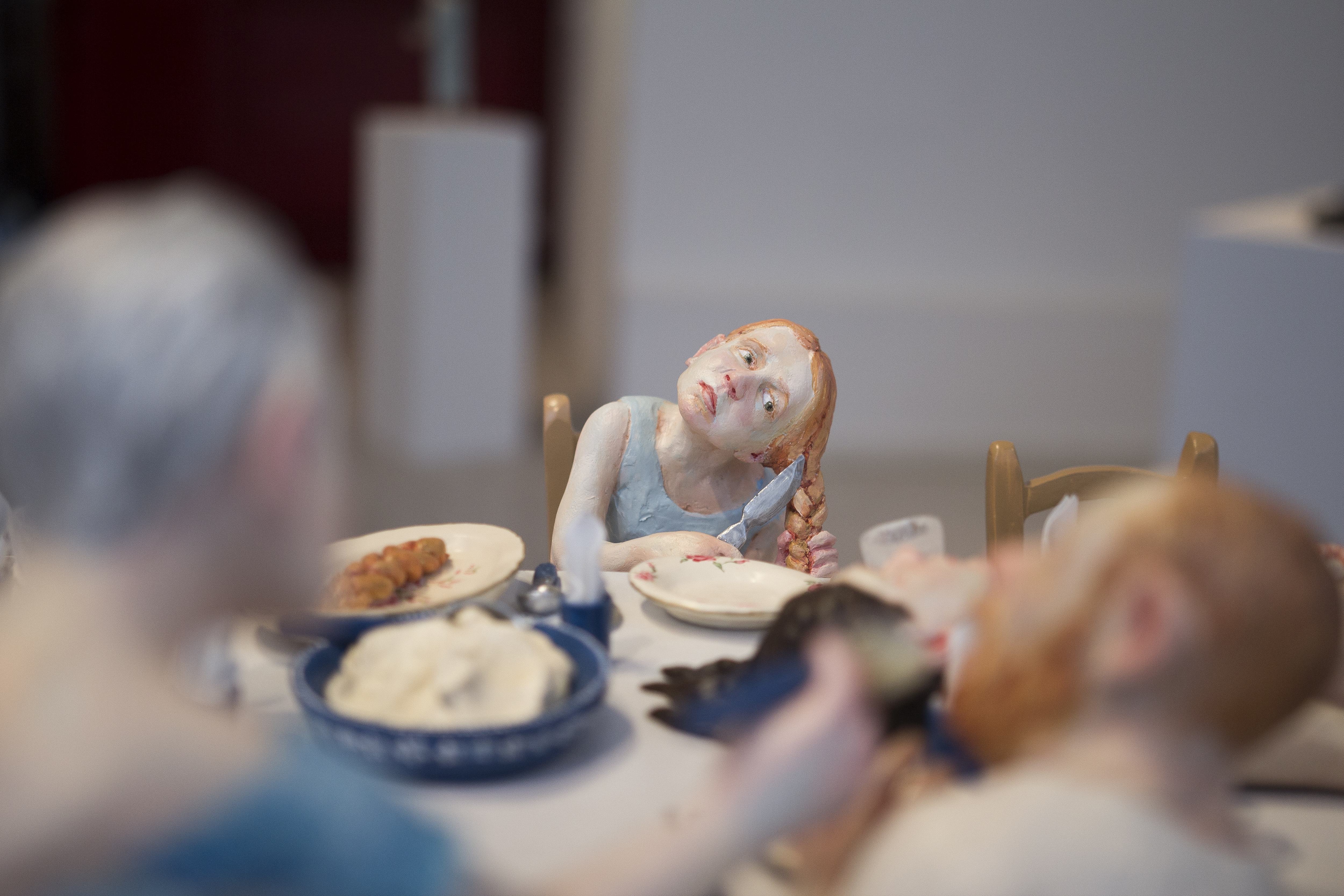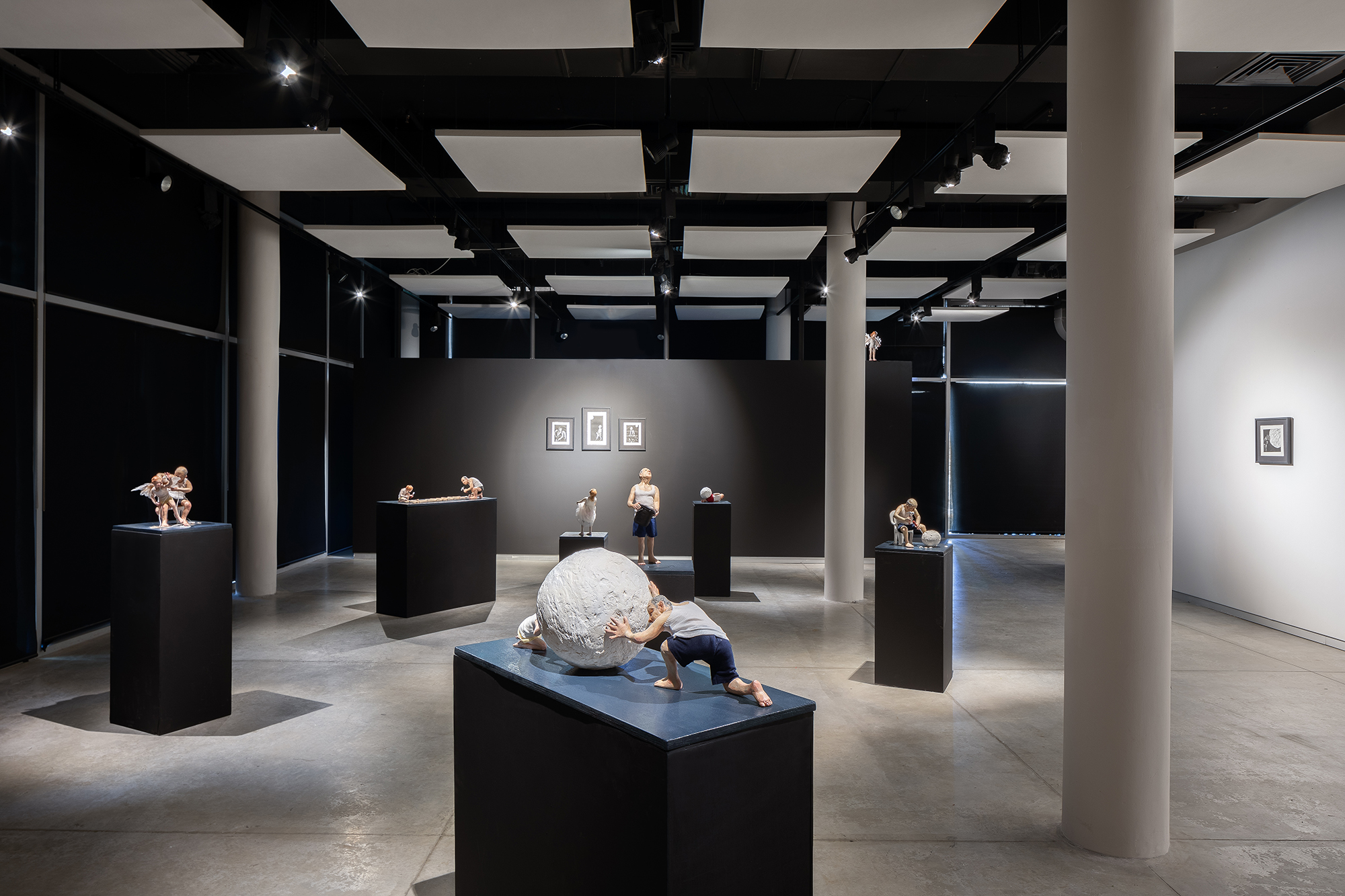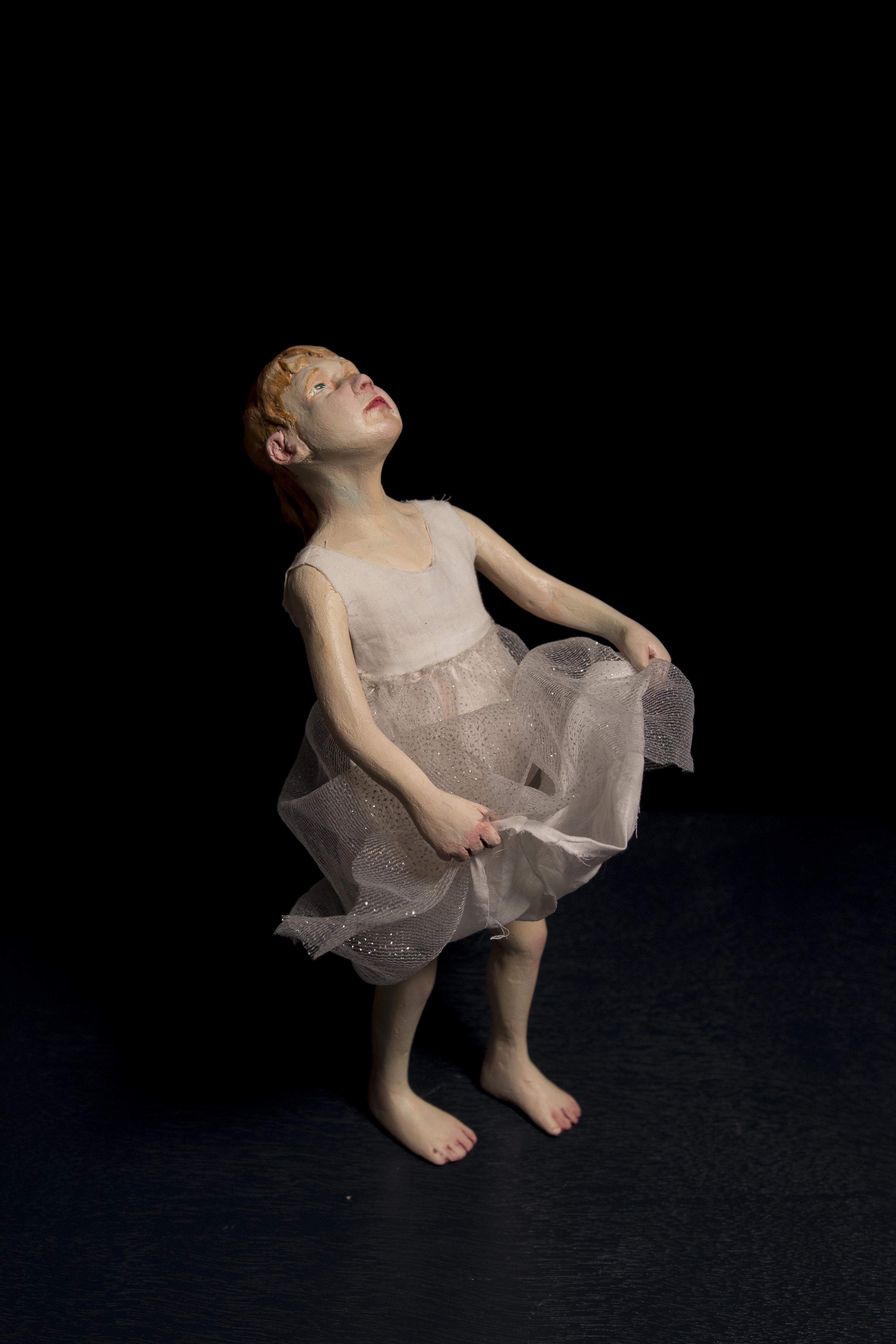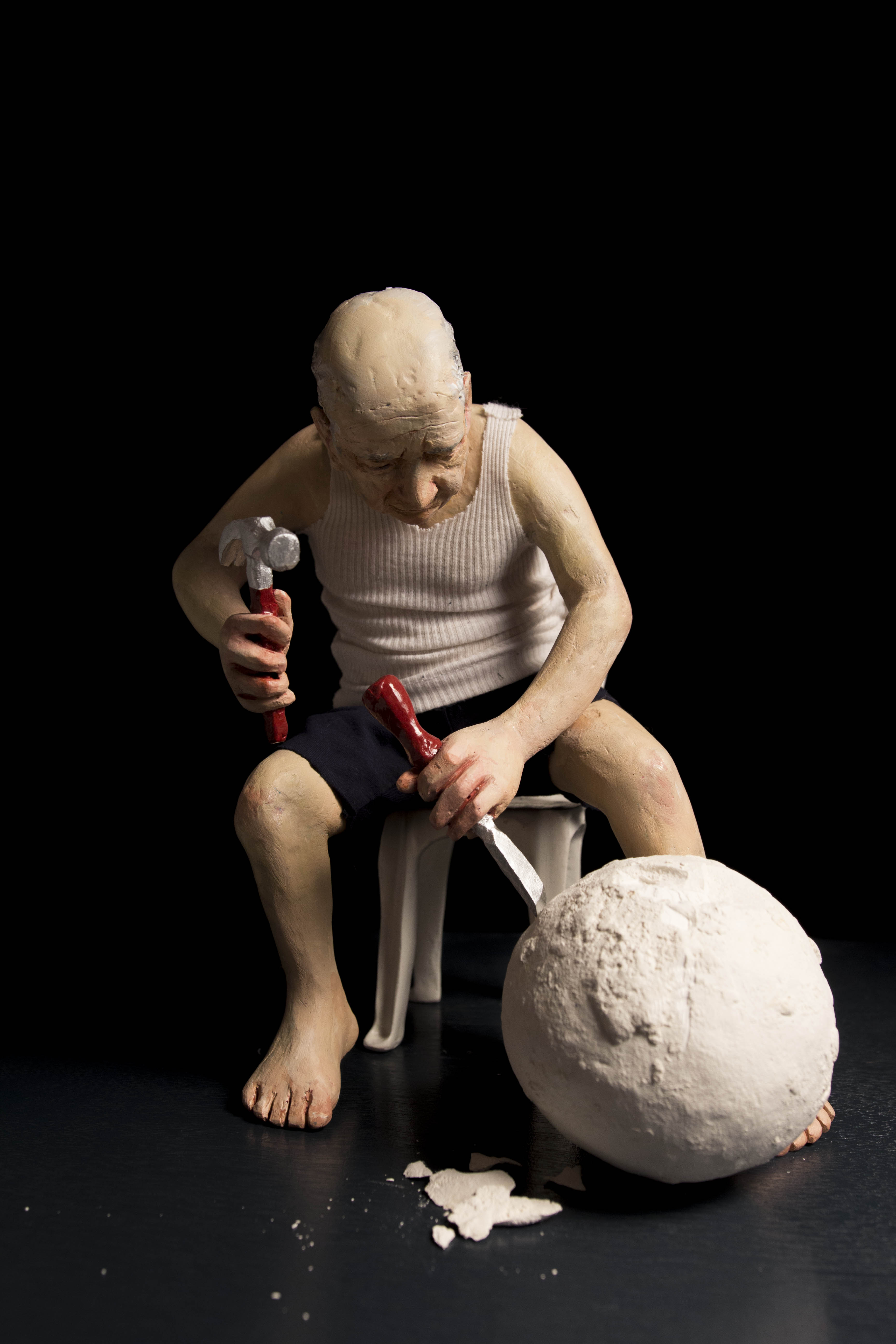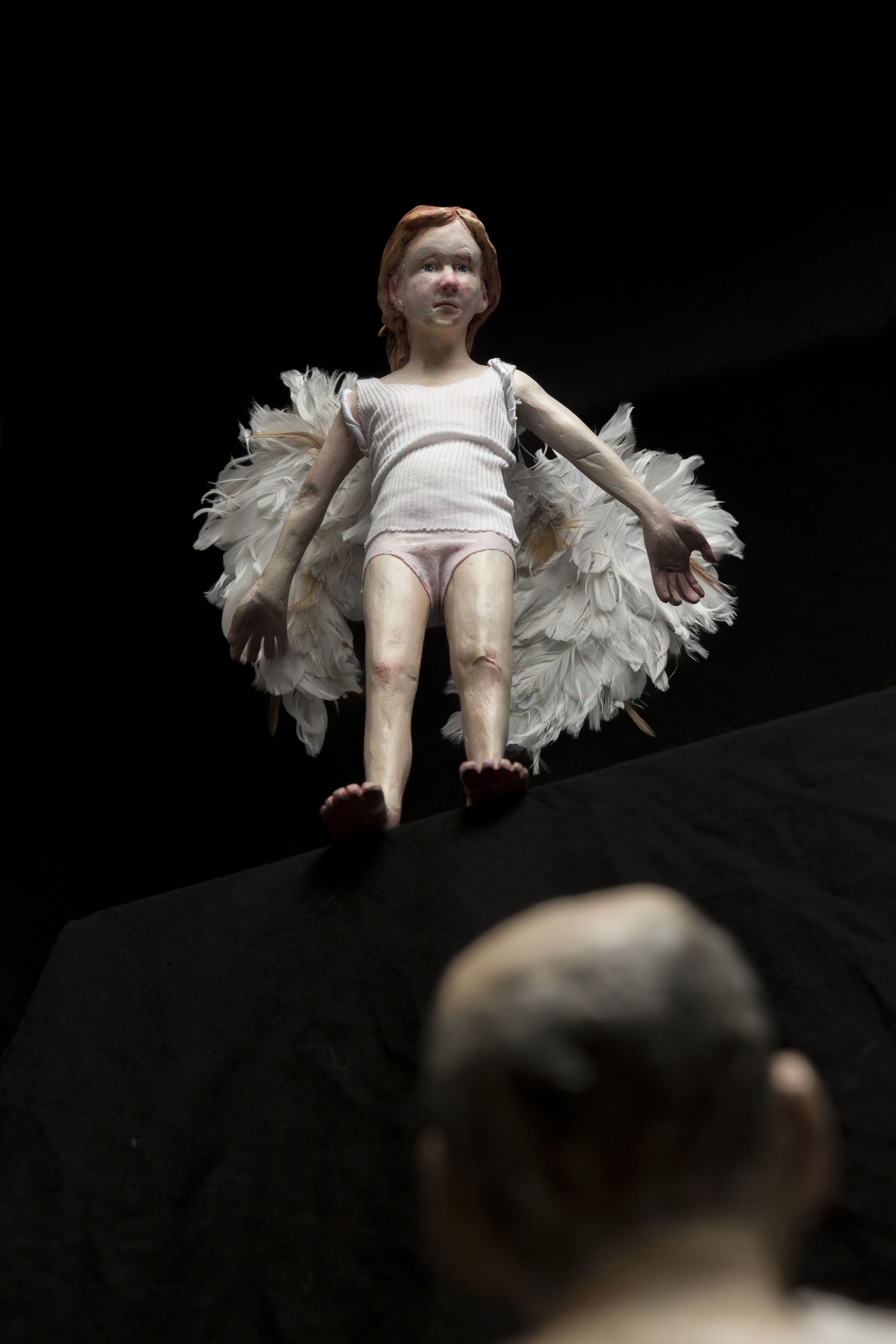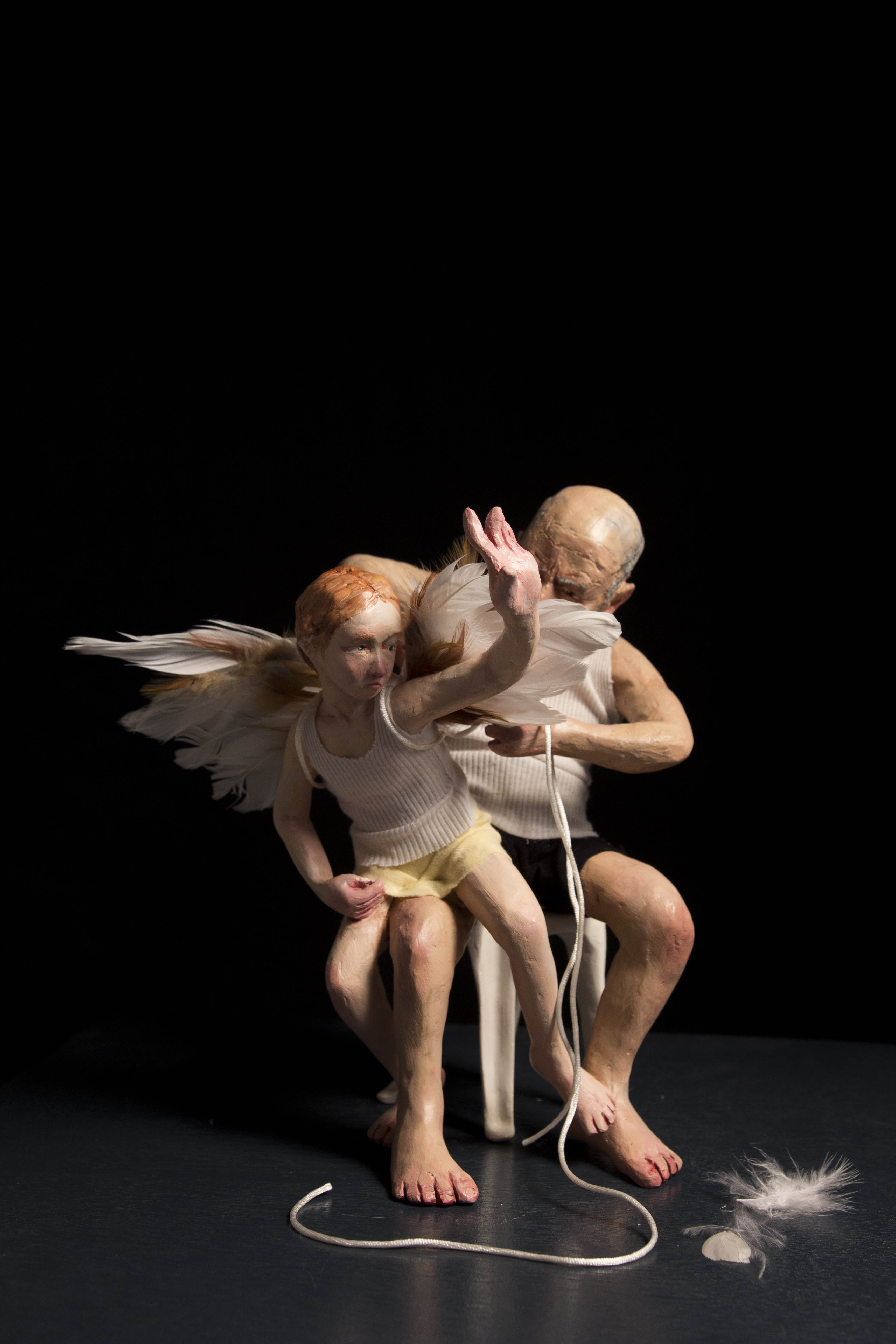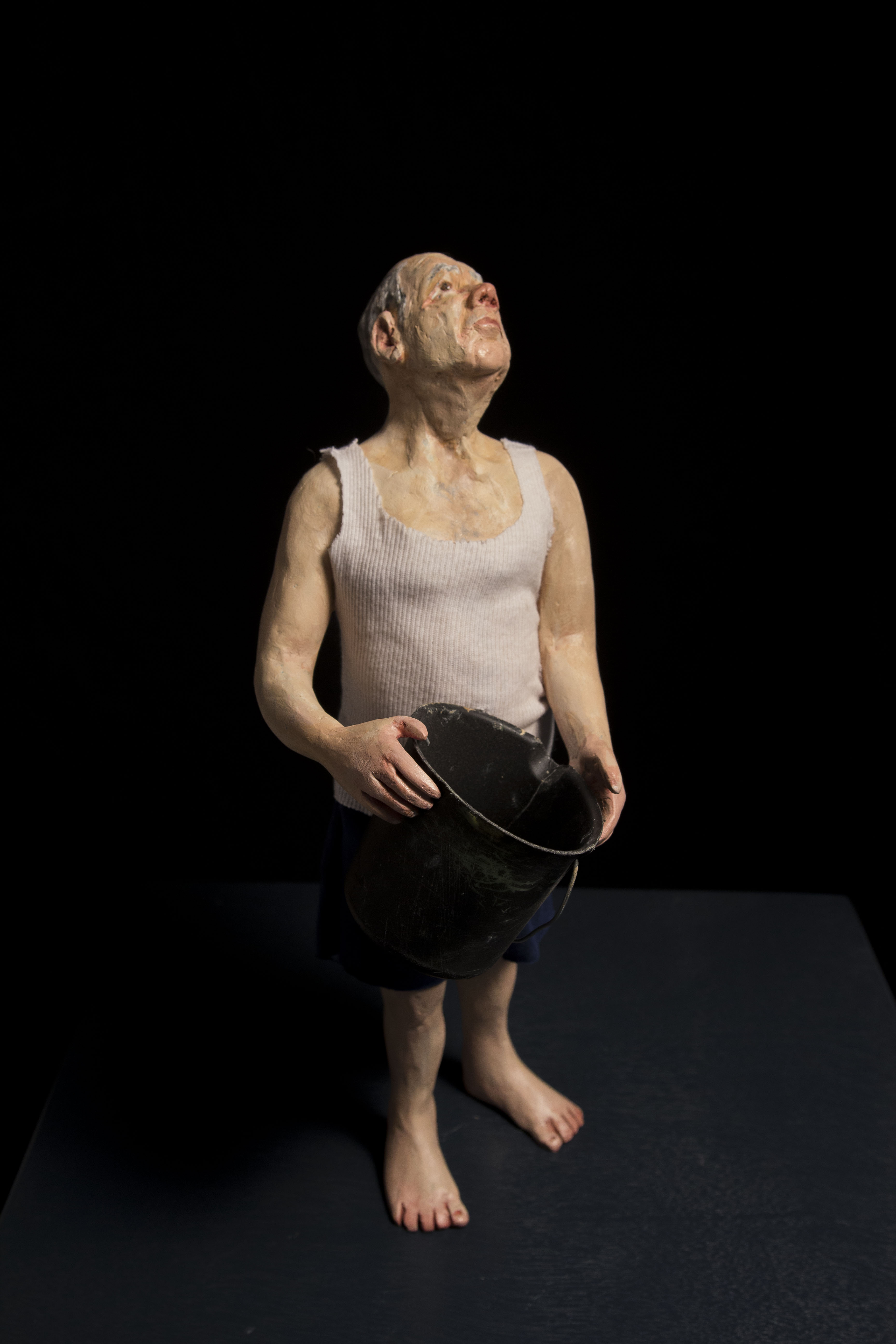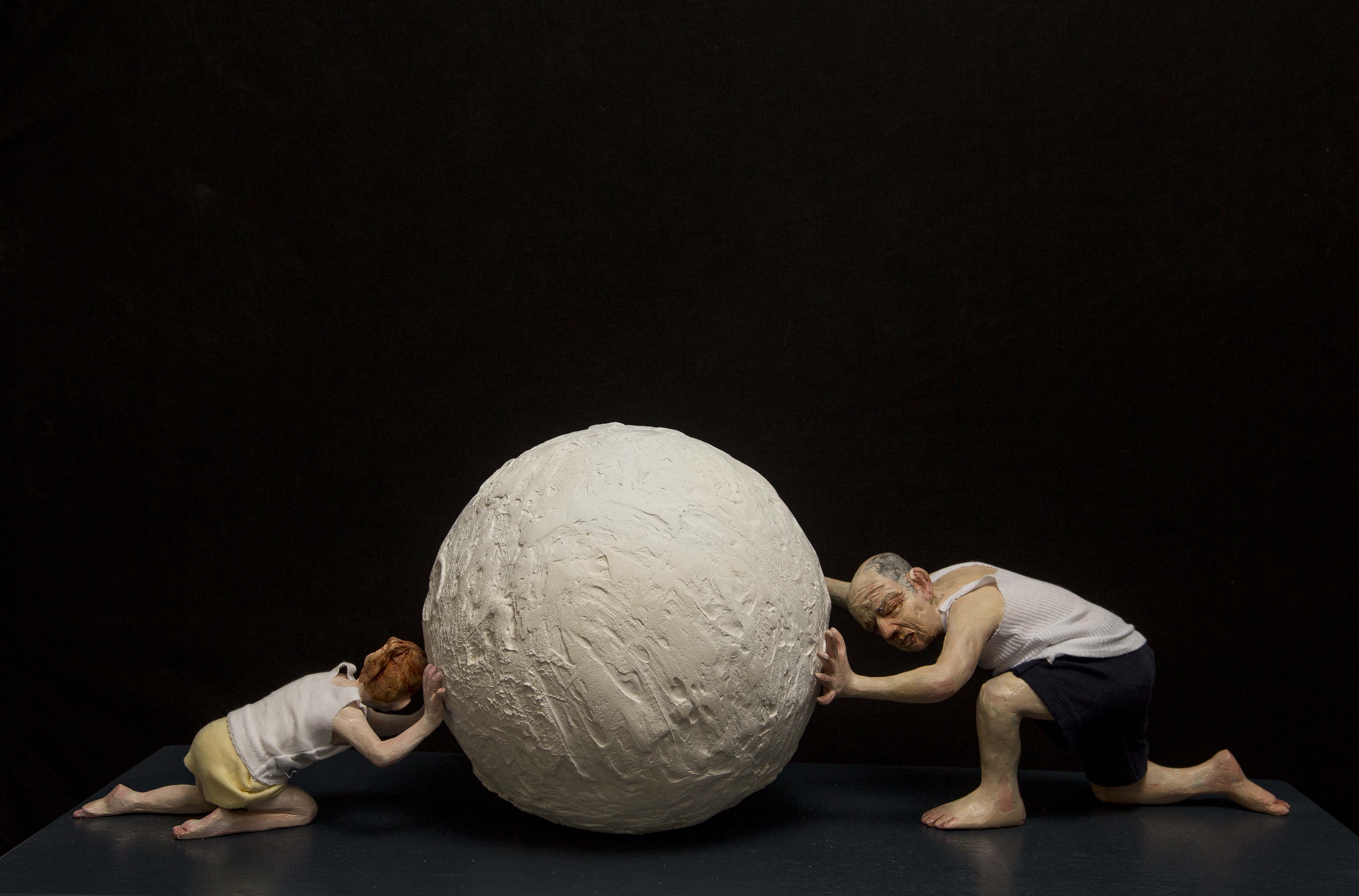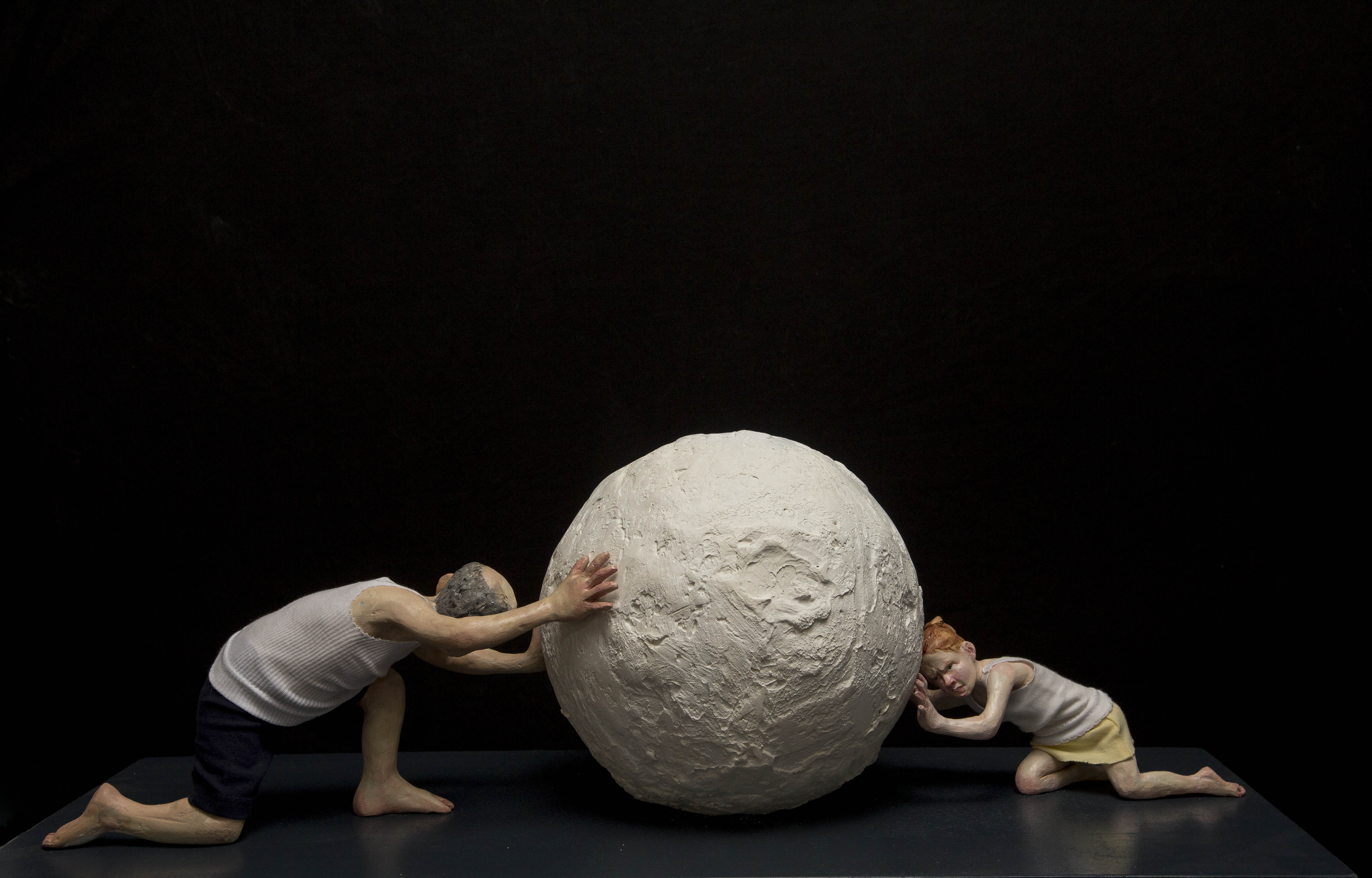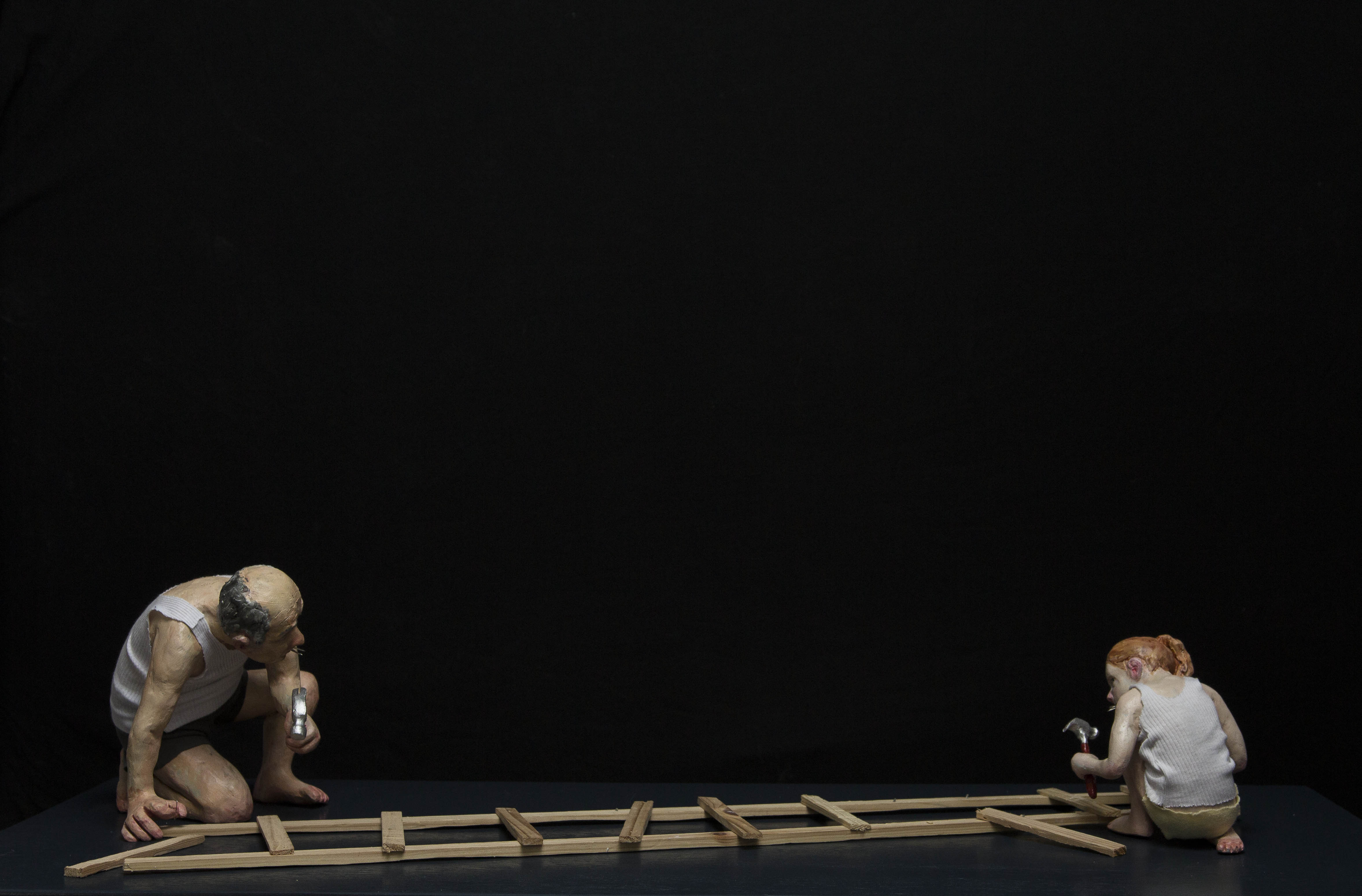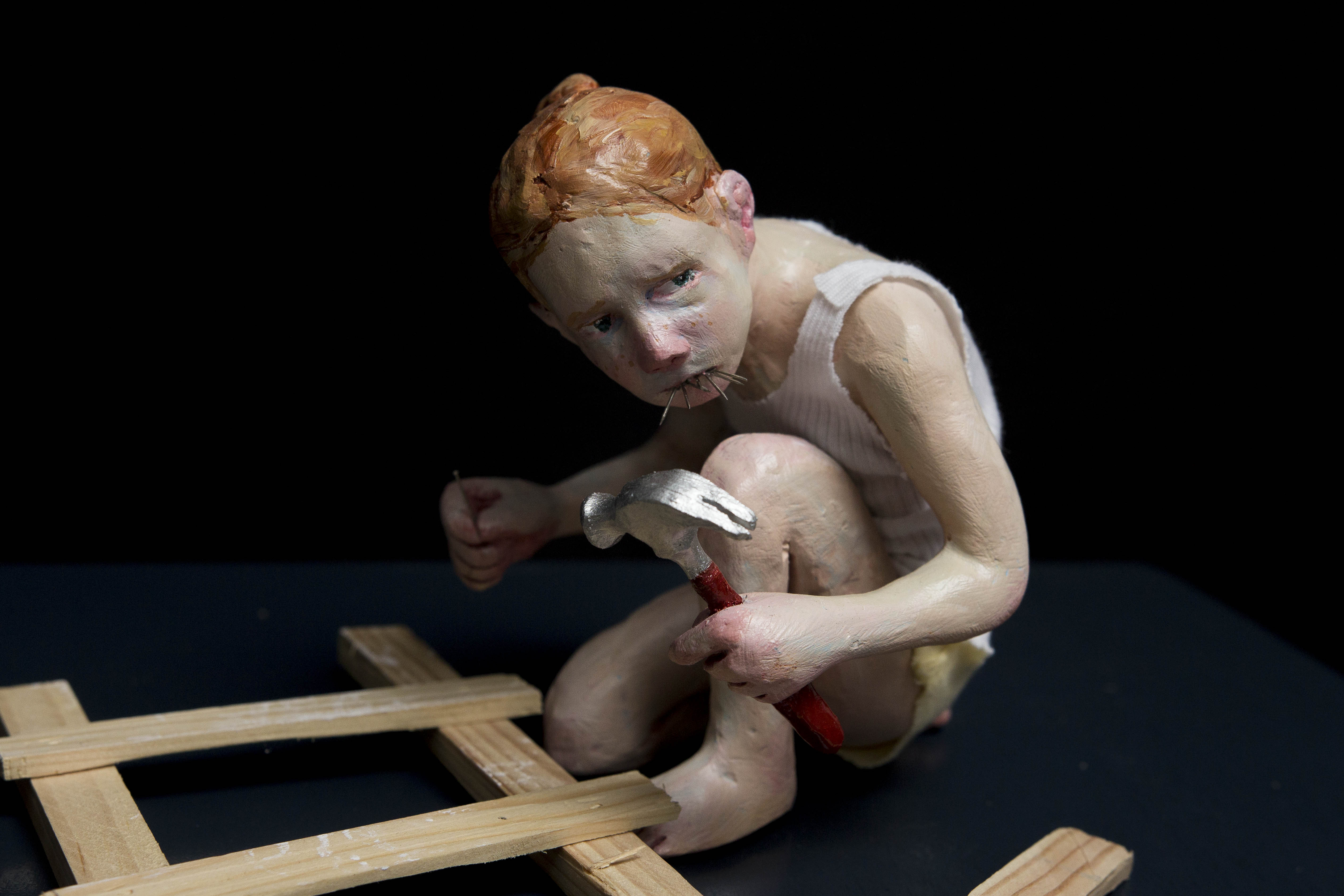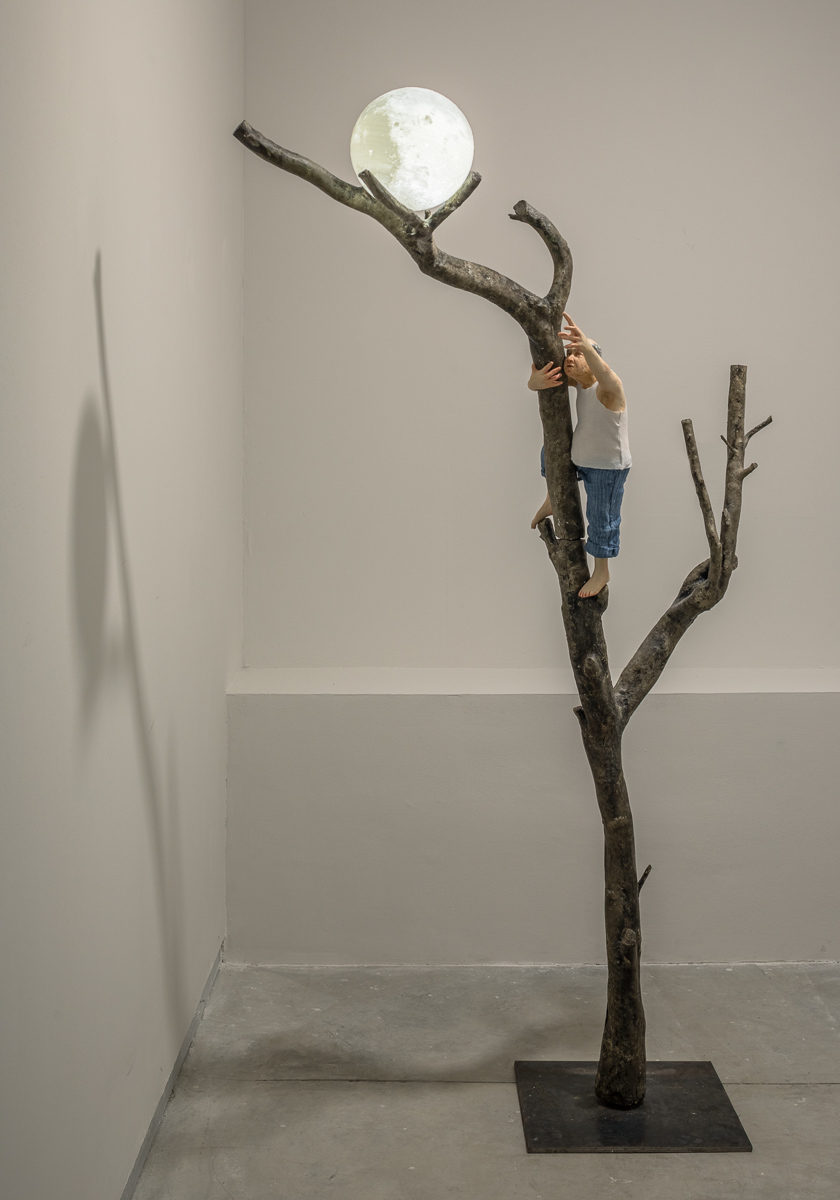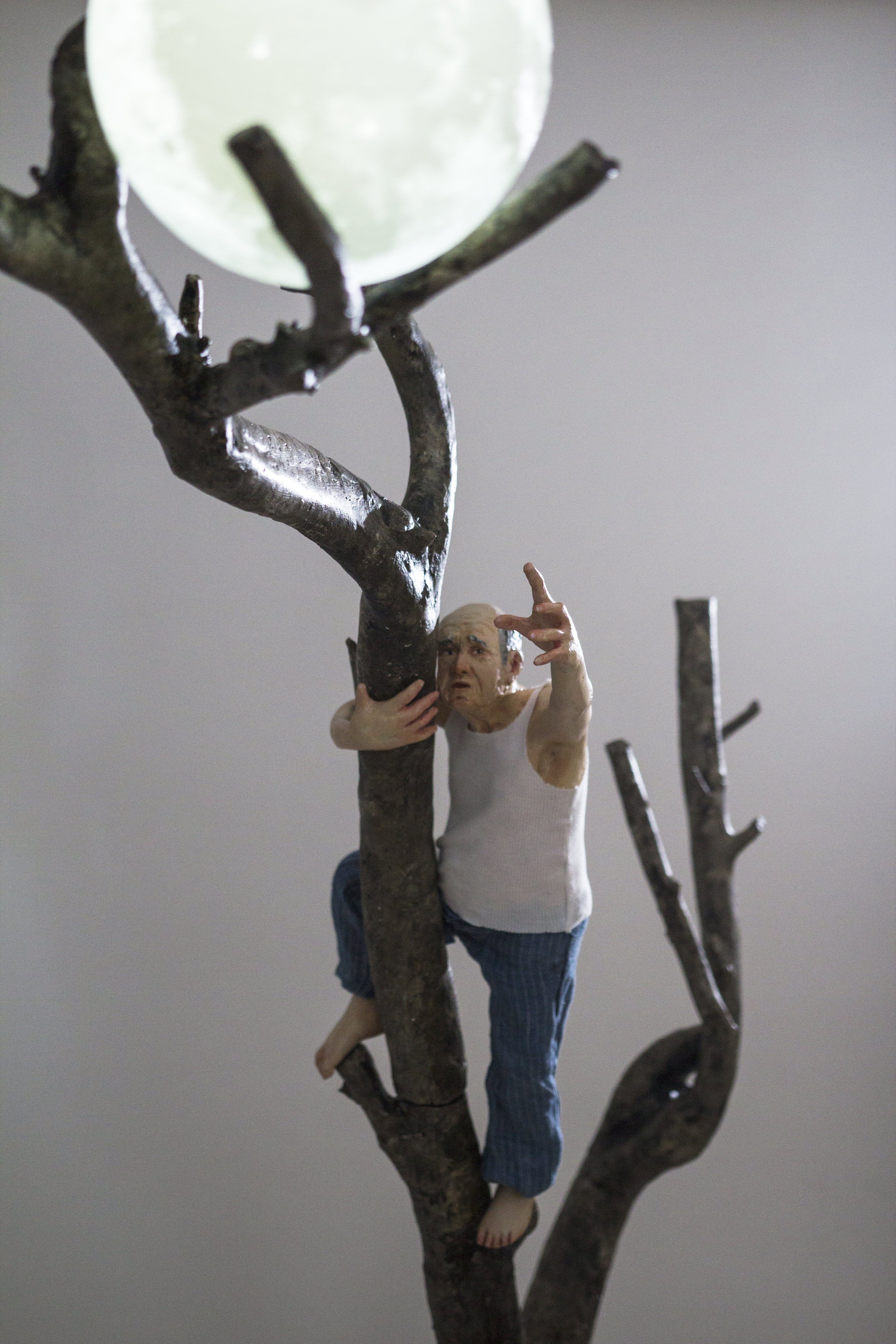“Vered Aharonovitch's major installation, marks the peak of her ongoing
preoccupation with those mental and psychological processes, society's powerrelations and
the delicate dialectics that range from revenge to reconciliation.
It also marks the completion of a cycle: all the characters and all of the artists' emotions and
expressive means are fused together now in order to create this fantasy of heroism. Although
reminiscent of the Baroque victory fountains that adorn the capitals of Europe, it is boldly
and reversely contemporary, as this time the girls are the victorious ones, having defeated
the only male in the scene...”
curator: Daria Kaufmann
*
the fountain is part of the permanent collection at the Ilana Goor Museum, Jaffa
fiberglass , water pumps
300x300x250cm
photography by Michael Liran
Links
Alfred Gallery - Daria KaufmannFountain - Smadar Sheffi
Ilana Goor Museum - Sophia Dekel Caspi
walla - Efrat Barashi Meppen
“The book in front of you was created following the exhibition The Cuckoo Clock by Vered Aharonovitch, curated by Dr. Aya Lurie, which was displayed at the Herzliya Museum of Contemporary Art between September 2019 and January 2020. The exhibition featured a large-scale kinetic installation, the central part of which was a house built as Aharonovich's childhood home. Through the windows and doors of the house, viewers could peek inside, and see the events taking place in it and the various figures who lived inside it, who were also inspired by Aharonovich's family. Next to the house a few trees were set - on one hung a swing with an old woman sitting on it. On another, a wooden house was built, in which a father and daughter aimed a rifle at the roof of the house, and on the branches of the third tree, a girl with bird wings was placed, watching the roof of a shelter beside which a grave for a pet rabbit was dug.
Among the various scenes that took place inside In the house, one could find a worried mother looking from the window to the street, not knowing what or whom she was expecting, a woman who was perhaps sinking, perhaps drowning herself in the bathtub, or a girl listening to the heartbeat of a father lying on the living room sofa. Hidden engines were attached to some of the components of the installation, which allowed the cyclical, endless and futile movement of objects and figures, while evoking thoughts of time, maturation and ageing, of life and death: the father running nowhere on a hamster wheel attached to the wall of the house, a woman repeatedly plucking greying hairs from her scalp, or a convoy of family members leaving the house, surrounding and returning to it - led by the figure of a grandmother holding a black garbage bag, which never reaches its destination.
The thing with exhibitions is, of course, that at some point they are no more. This is true for any exhibition, and even more so for an installation, whose chances of being presented in the same way again are very low to nil. And so, here too, at the end of the exhibition period, the house was dismantled, and its parts were packed in boxes stored in Aharonovich's studio - without knowing if they would ever see light again.
The desire to create and carry through the experience of the exhibition in the world - an experience of movement and franticness, along with intrusiveness and invasion of privacy - took shape in the form of this book: a pop-up book, which embodies something of the three-dimensionality of a sculptural installation, while allowing the reader a very personal and intimate experience. In addition, and as a continuation of what is happening in the exhibition, here the book itself requires us not only to take a closer look - but to take an active and real part in the movement that it offers, while we are asked to pull, open or fold its various parts, to find out what happens in it and dictate its mode of operation. Hence, the book in front of you is not a documentation of the exhibition, but a complex and developed continuation of it: while in the exhibition we are unable to touch the artistic object, here it is permitted and even desirable. And if in the exhibition we could only peek inside the house for a few moments - then now we get to bring the whole exhibition into our own home, forever.
Those who have followed Aharonovitch's work in recent years mostly know her as a sculptor. The Cuckoo Clock exhibition was also, certainly, a sculptural exhibition. But Aharonovich began her artistic career as a painter and came to sculpture after completing her master's degree at the University of Haifa. Aharonovitch says that she then lifted by herself the statue she created, and in order to carry it she found herself embraced with the sculpted figure. This intimate contact first evoked thoughts about the physical relationship between a person and a statue - where one can touch it, caress it, pricked by it.
In this book, Aharonovitch seems to complete the circle: it begins with a sculptural exhibition, where the scenes depicted in the book are taken from the rooms of the house presented in the exhibition. But its ending goes back to the painting: all the images that appear before you were painted by Aharonovitch after and following the exhibition, and were created especially for the book. The spatial perception made possible by a pop-up book, along with the integral flatness of painting allows Aharonovich to bind colour with volume, movement with mass, and image with space. In doing so, the book becomes an artistic object in itself, and every reading of it brings it to life: it becomes a home.”
Hagar Raban
*
credispaper engineer - Oran Schneider
design - Avigail Reiner (The Studio)
Links
Purchase the book - SHOPThe Cuckoo Clock Book - YouTube
The Cuckoo Clock Exhibition - YouTube
“"Passover Night" is a sculpture exhibition that perfectly expresses the artistic language that
Aharonovich has developed and honed in recent years. The "characters" and the various
motifs of her works: the striving father, the vengeful girl, the love birds, and many others sit
around the "Seder table". In many elaborate references to art history, the various characters
unfold before us a world of gestures and expressions from the world of self-sacrifice in its
various aspects, both familial and psychological, as well as cultural and universal...”
curator: Johanthan Hirschfeld
*
2016 -Hanina Gallery, Tel AvivHerzliya Museum, Herzliya
polymers
160x70x42cm
Links
Portfolio Magazine - Hagit Peleg RotemHanina Gallery - Jonathan Hirschfeld (EN)
Hanina Gallery - Jonathan Hirschfeld (HEB)
Basis - Magazine
“Vered Aharonovitch’s solo exhibition centers on a family and their fine house, which we are invited to inspect in a spot of voyeuristic indulgence. Despite its conventional, respectable appearance, in thishouse there are no compunctions about washing the dirty laundry in full view. We must not allow the exquisitely rendered details of this dollhouse – with its appealing solidity, bright expression, and gingerbread-like colors – to deceive us, for it possesses the seductive complexity of traditional children’s fairytales, with their heady mix of magic and fear, brutality and gentleness, reality and fiction. Back then, those fairytales were not afraid to shock and dwell upon the forbidden and appalling, gleefully holding back from reaching the happ ending that subordinates reality to artistic enjoyment...”
curator: Dr. Aya Lurie
*
Mixed media, kinetic sculpters290x260x200cm
photography by Michael Liran and Lena Gumon
Links
Herzliya Museum text by dr.Aya LurieCan - Art Magazine
Portfolio Chat - Hagit Peleg Rotem
“In the children's book The Princess Who Wanted the Moon Princess Lenore falls ill because of
her desire to have the moon. Her father, the King, calls in his three advisors: the Lord High
Chamberlain, the Royal Wizard and the Royal Mathematician, commending them to quickly
obtain the celestial body for his daughter. The advisors give different reasons why it is
impossible to bring the moon to the palace: it's too big, too far away or made from a burning
fire that will set the whole kingdom in flames. Eventually, the mission is accomplished thanks to
the Court Jester who asks the Princess what does the moon look like and what is it made of,
only to present her with the moon - a small, round and golden pendant, hung on a necklace...”
curator: Hagar Raban
*
photography by Michael Liran and Tal NisimLinks
Galil Gallery - Hagar RabanCalcalist - Reut Barnea
Dad will bring the moon - Hagar Raban
